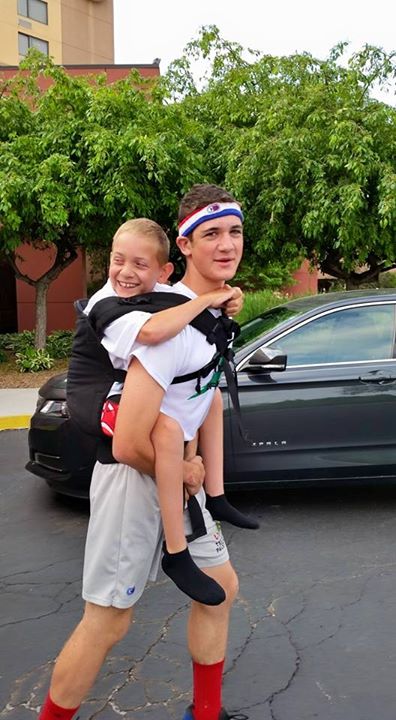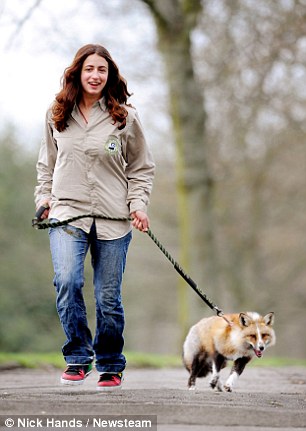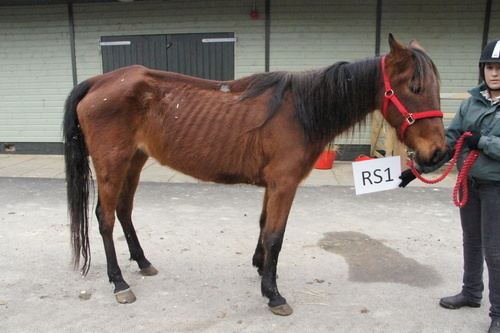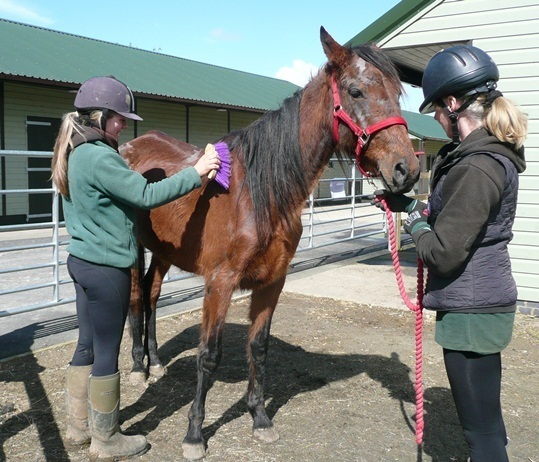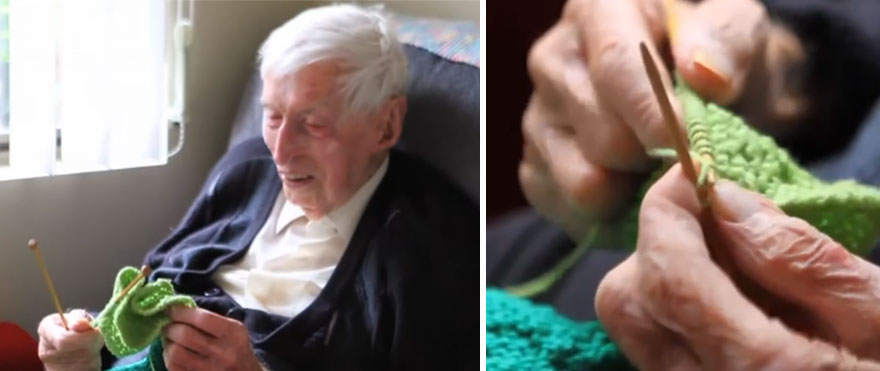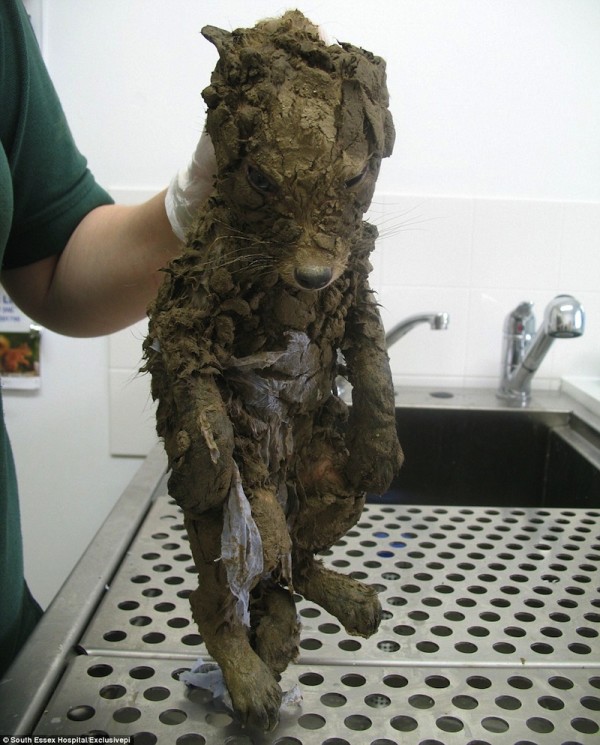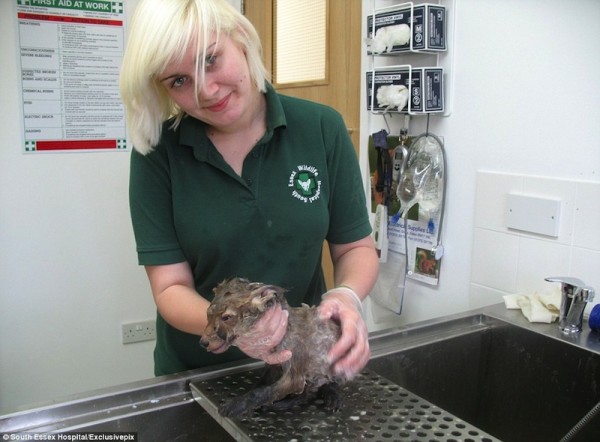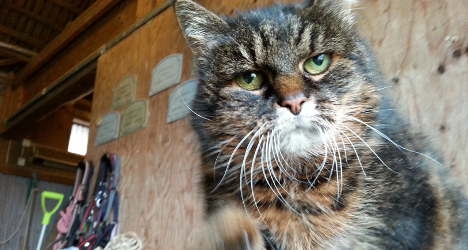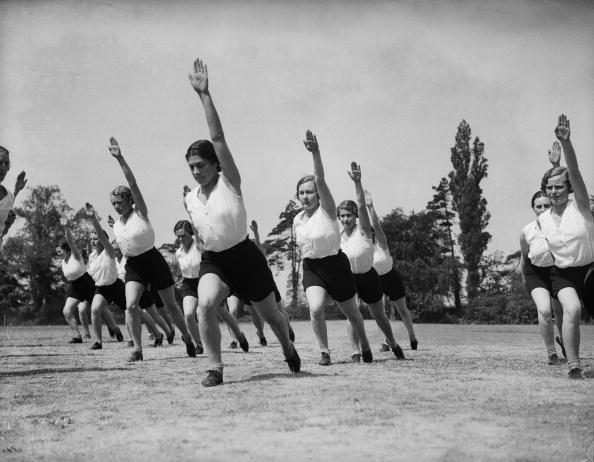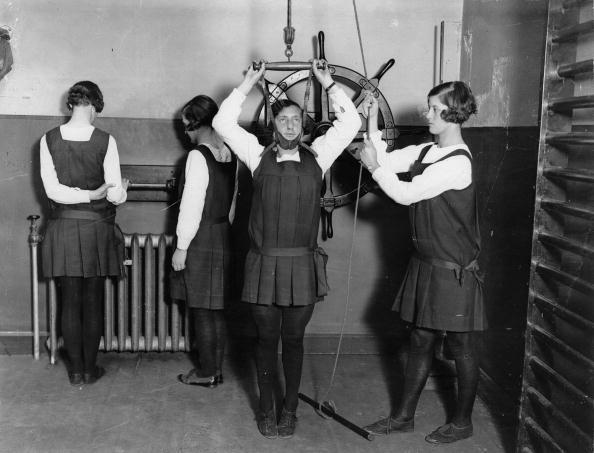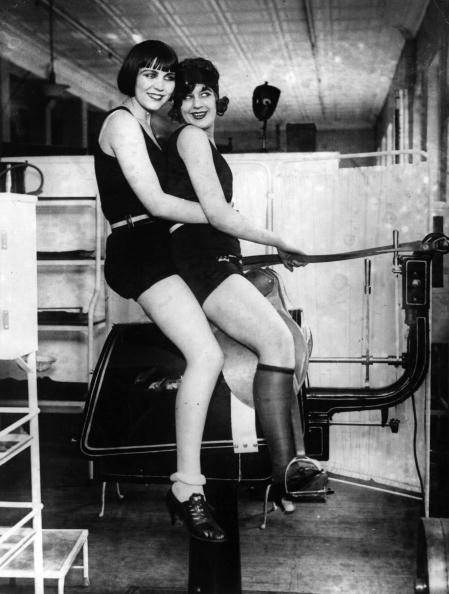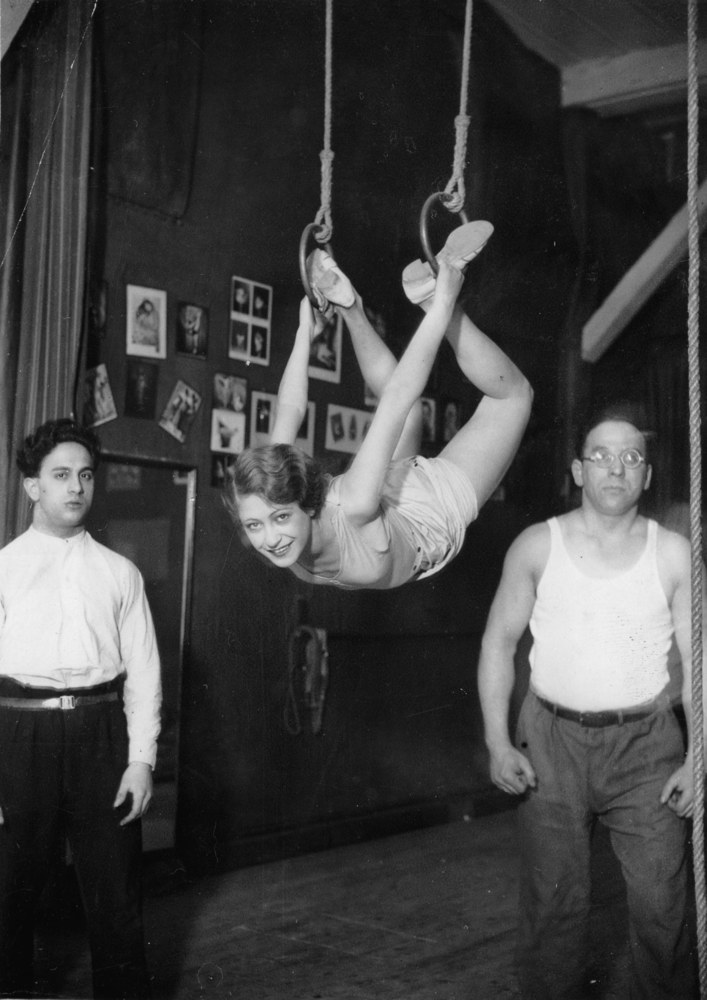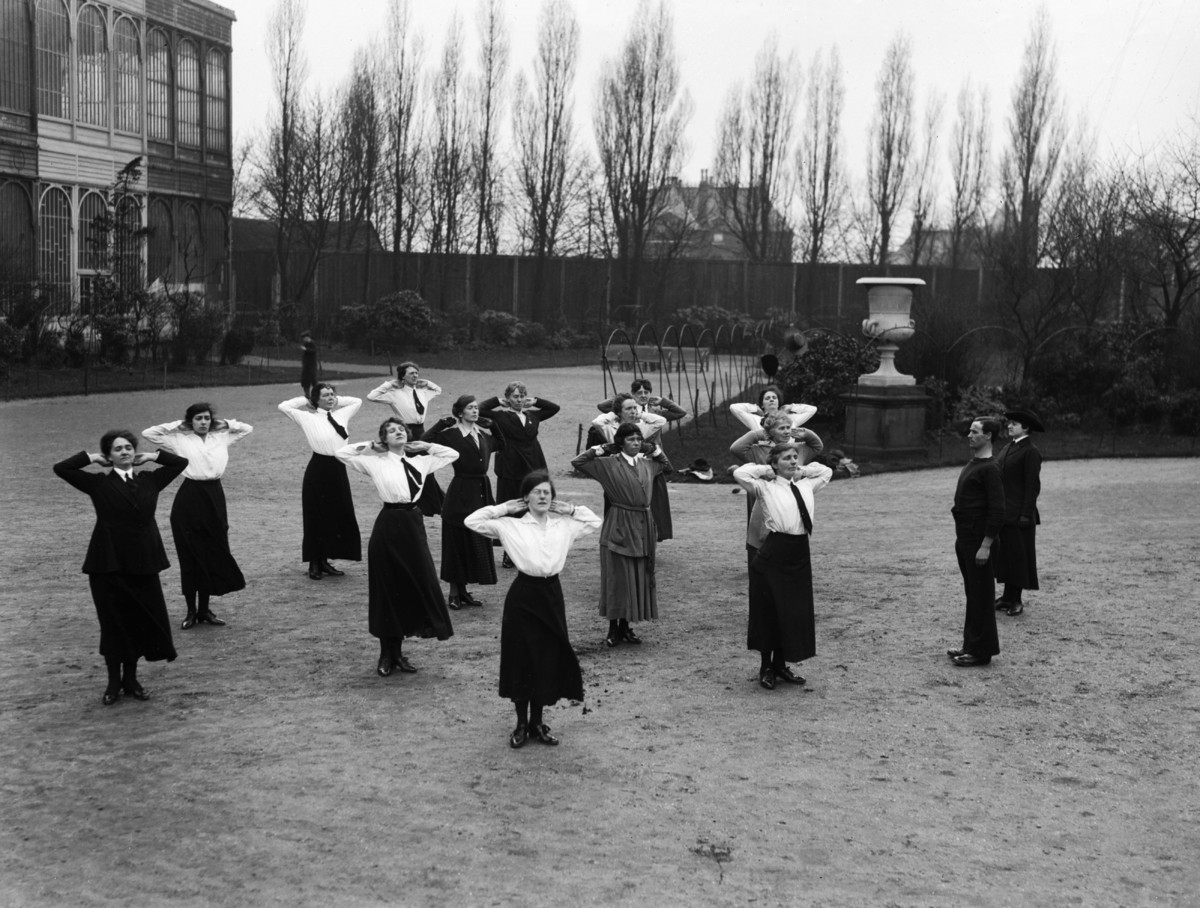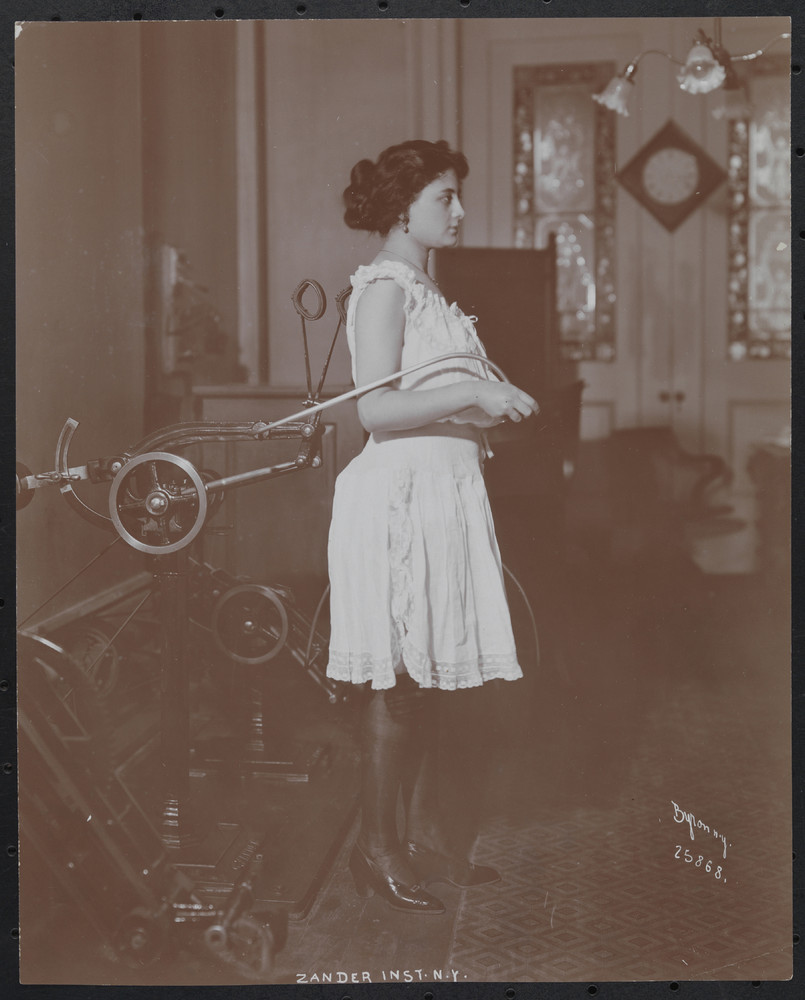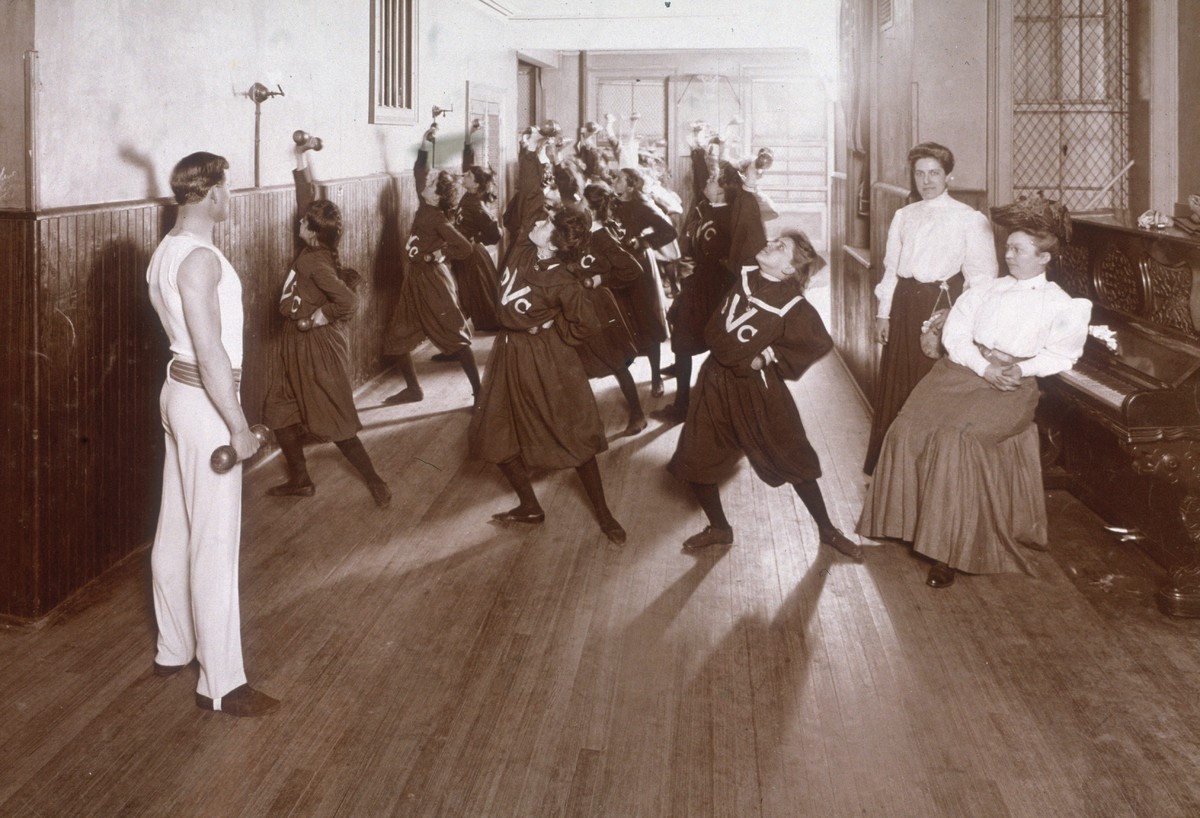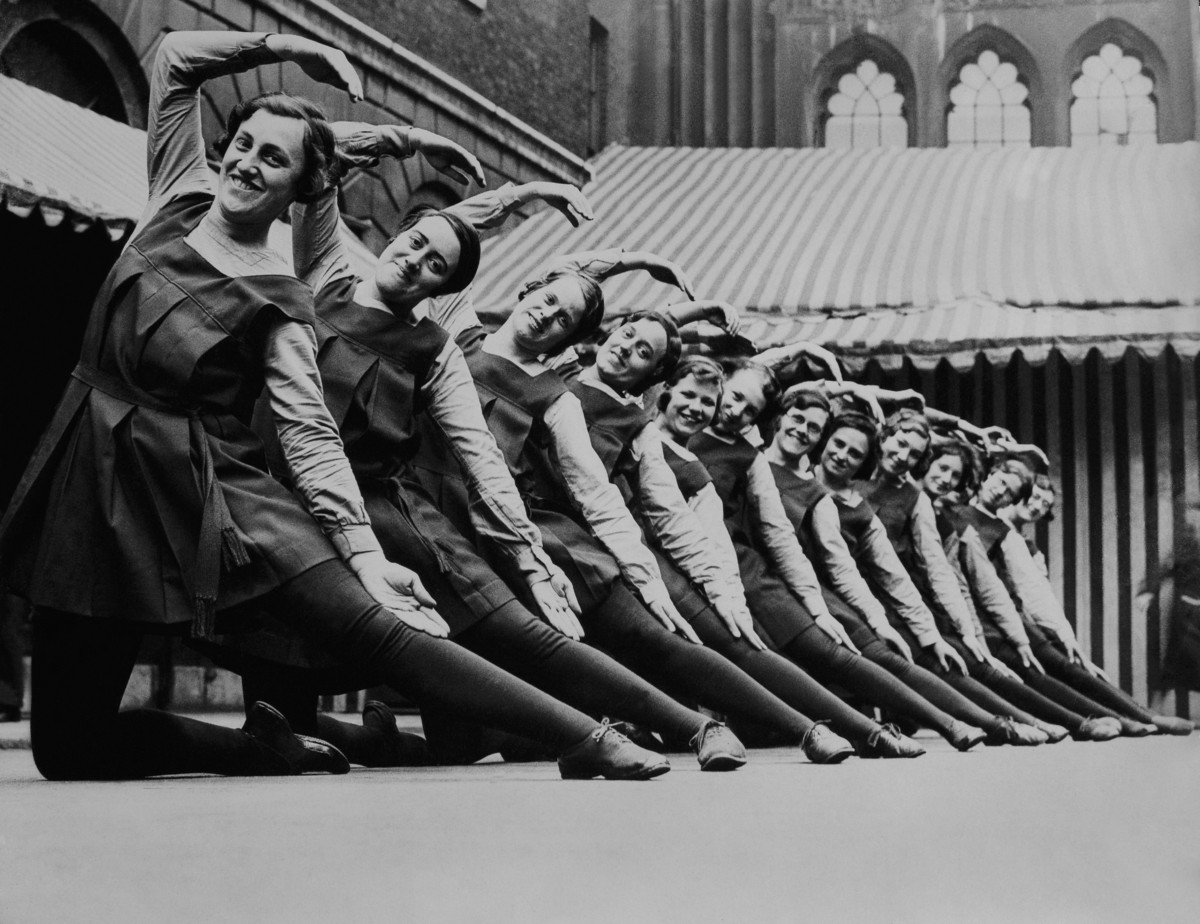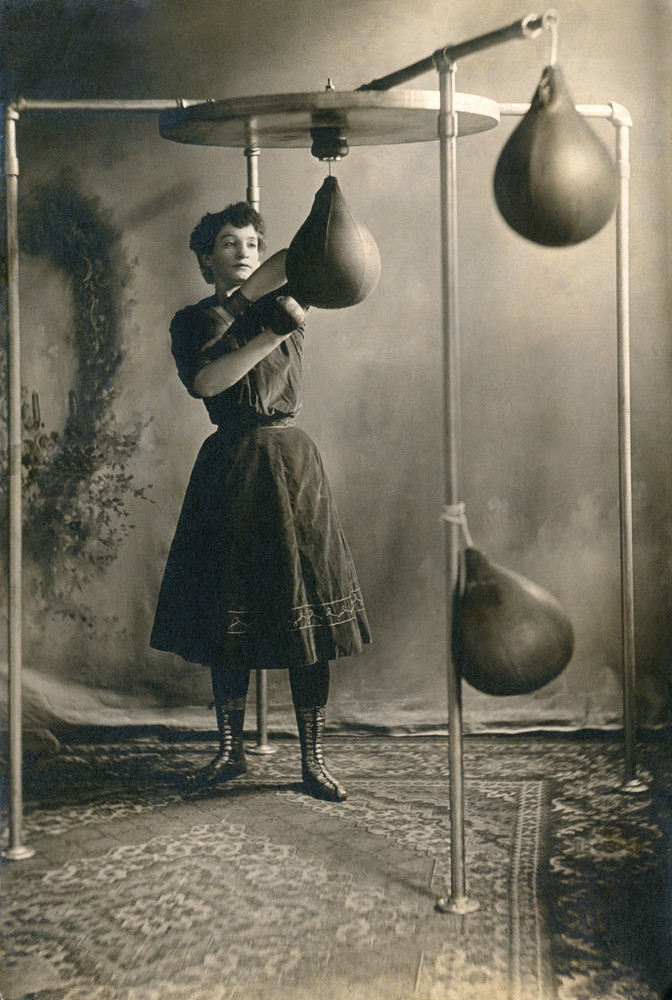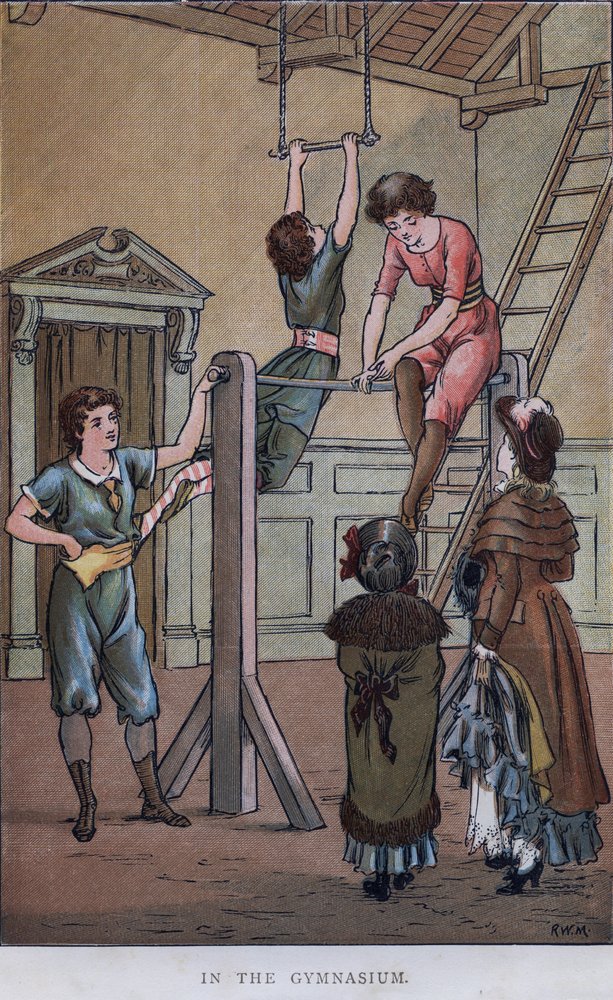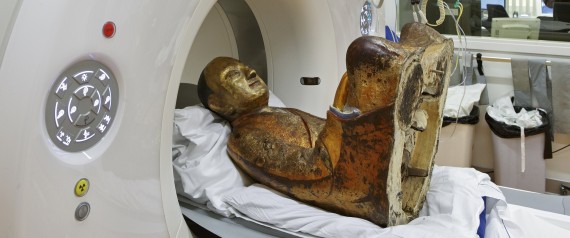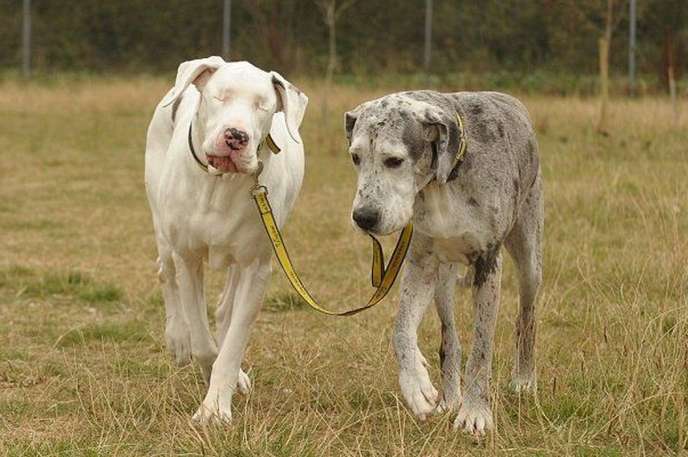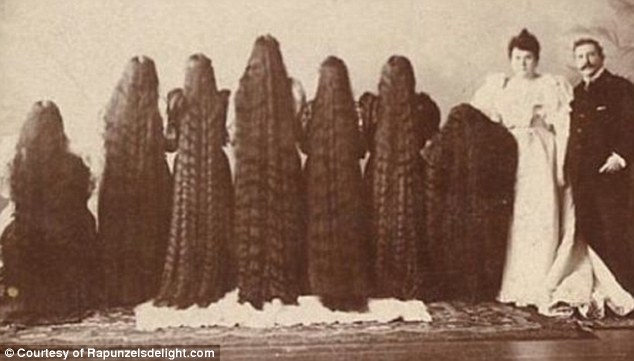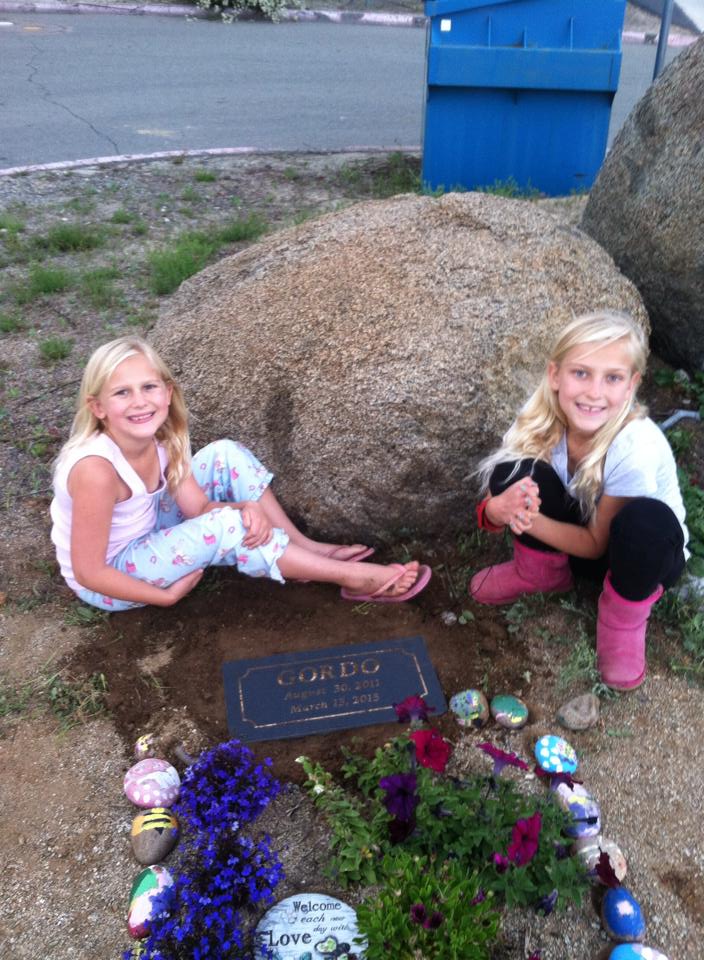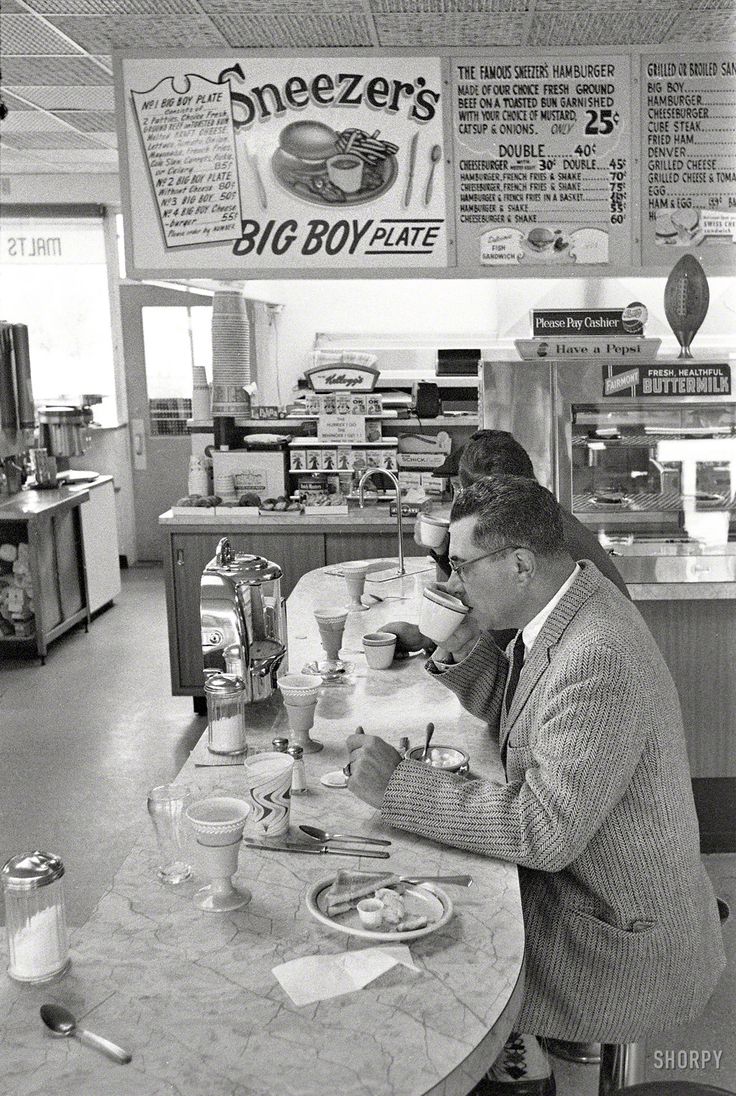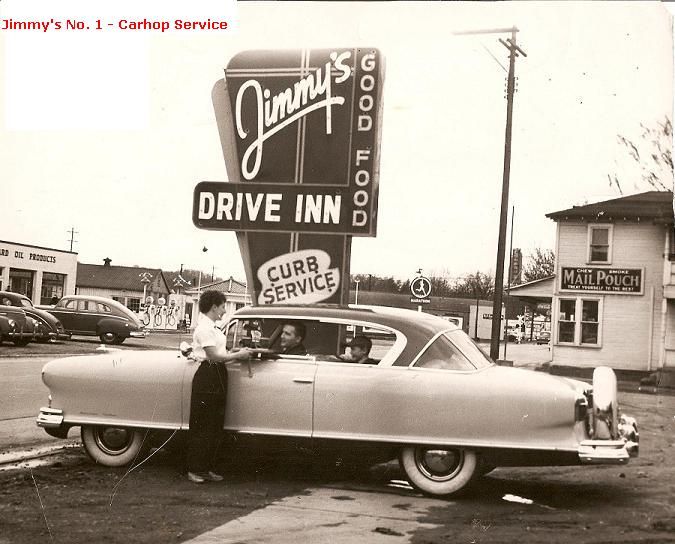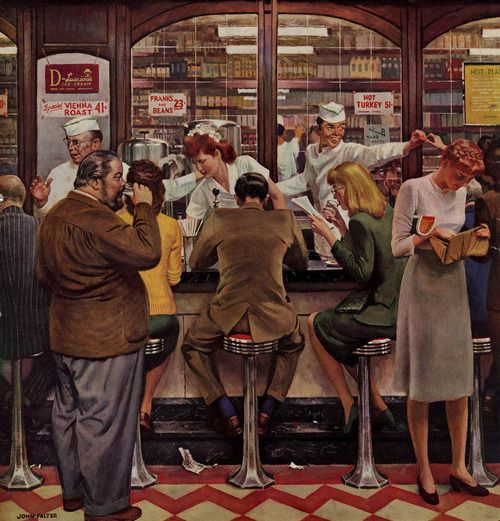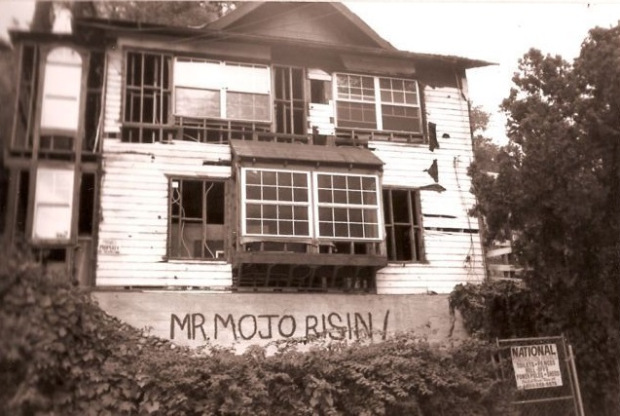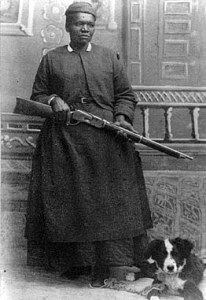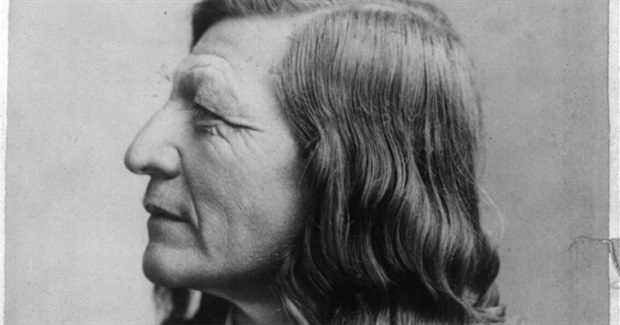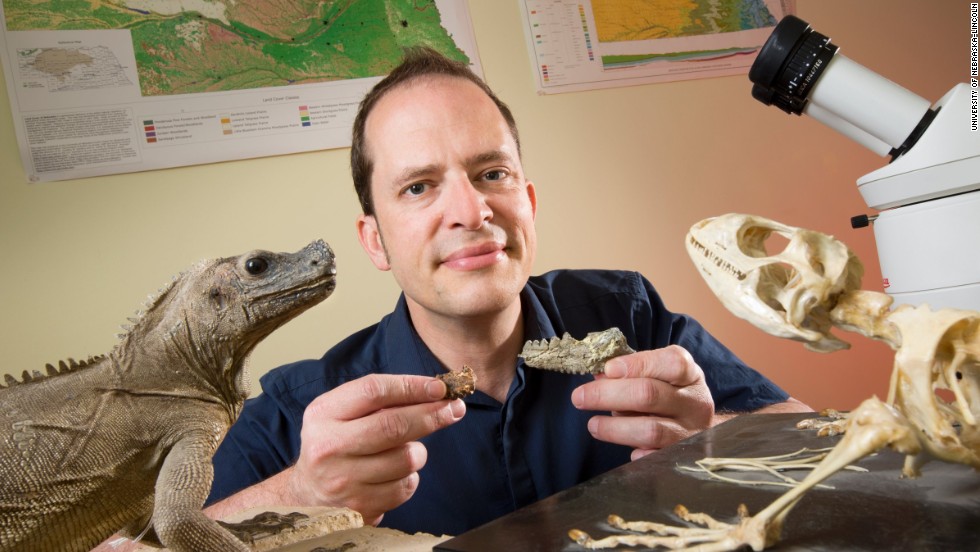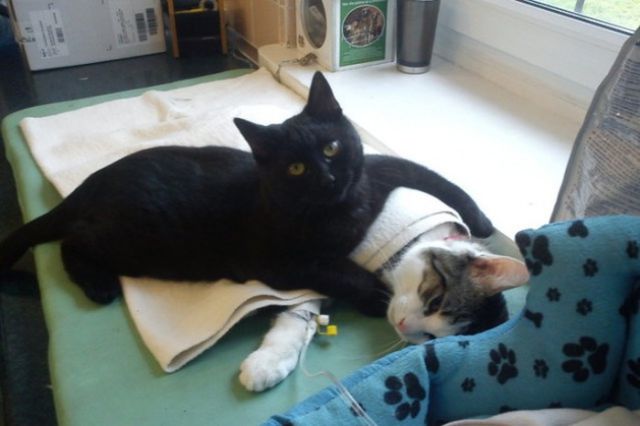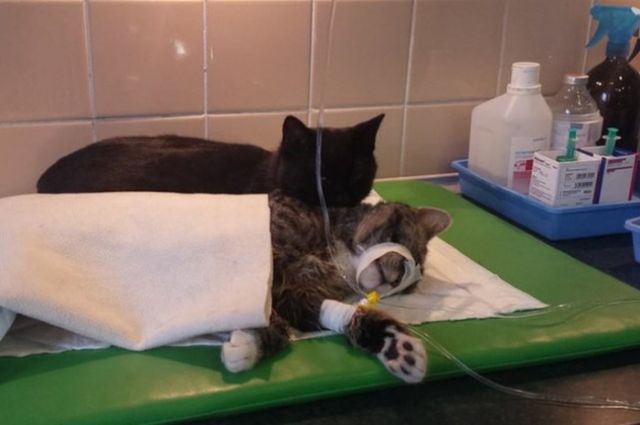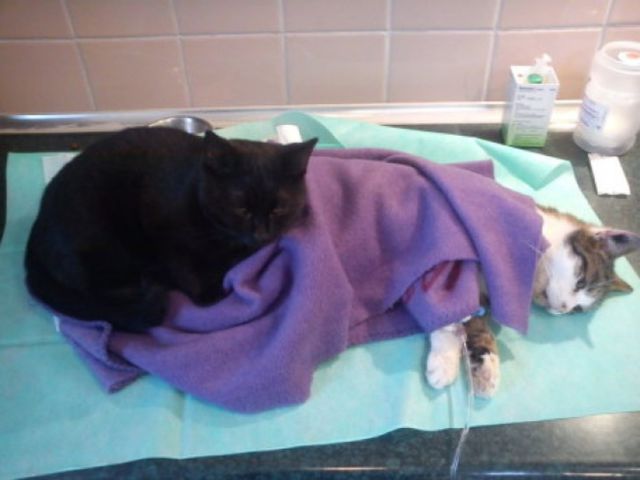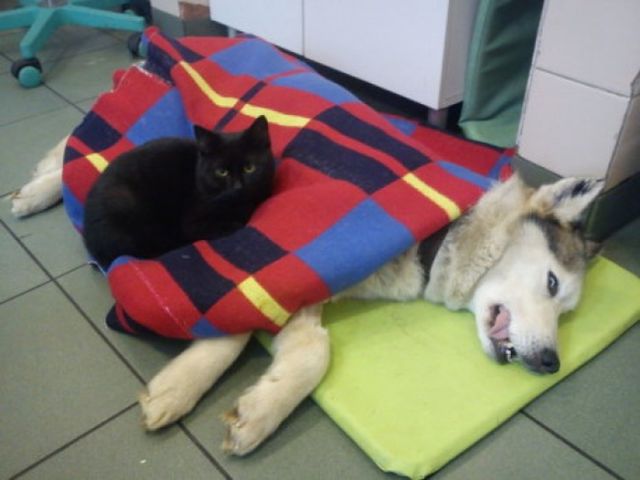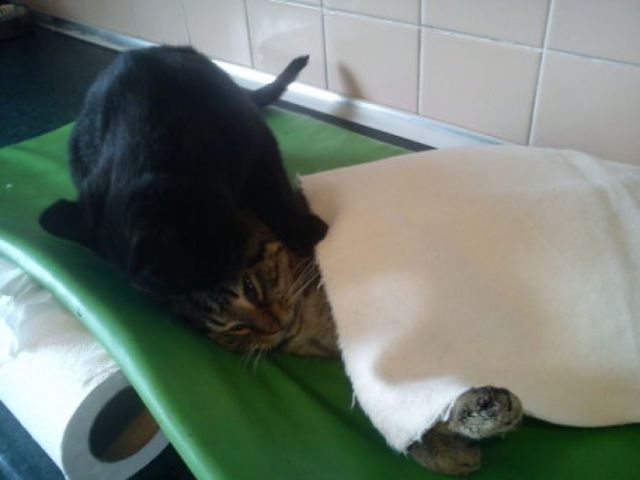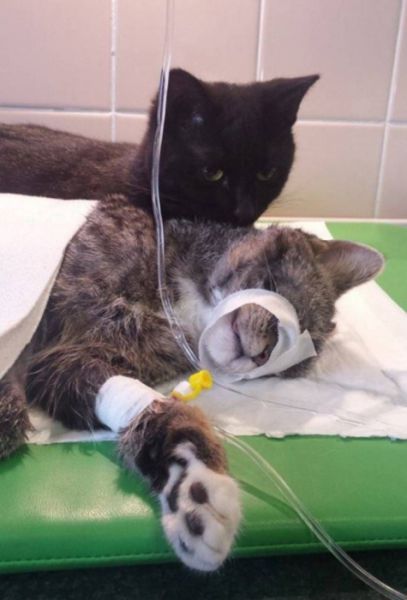-
Primary Widget Area
-
This theme has been designed to be used with sidebars. This message will no
longer be displayed after you add at least one widget to the Primary Widget Area
using the Appearance->Widgets control panel.
- Log in
Category Archives: Summer 2015
He Ain’t Heavy He’s My Brother
“He Ain’t Heavy, He’s My Brother”
The road is long
With many a winding turn
That leads us to who knows where
Who knows when
But I’m strong
Strong enough to carry him
He ain’t heavy, he’s my brother…
“Beyond sore, beyond tired, beyond thankful, beyond blessed.”
Those were the words tweeted by 15-year-old Hunter Gandee Sunday after he successfully carried his 8-year-old brother on his back — for 57 miles.
Hunter’s brother, Braden, has cerebral palsy, a neurological disorder that affects body movement and muscle coordination. Braden cannot walk without assistance.
In 2014, Hunter embarked on a challenge which he dubbed the “Cerebral Palsy Swagger” to raise awareness about his brother’s condition. For the challenge, Hunter walked for 40 miles while piggybacking Braden. The idea was to demonstrate “the physical and mental challenges faced everyday by those affected by cerebral palsy.”
At the time, Hunter said the journey had made him more exhausted than he’d ever been in his life.
Still, for this year’s challenge, the teen decided to push himself even harder.
Hunter and Braden started their journey on Friday in Lambertville, Michigan. Three days, 57 miles and a few breaks later, the pair arrived at their final destination — the University of Michigan’s Pediatric Rehabilitation Center in Ann Arbor.
That was “definitely the hardest thing I’ve ever done in my life,” Hunter wrote on Twitter after completing the challenge.
Hunter told the Associated Press that the challenge was a big success. “We were able to reach more people,” he said. “That’s what our goal was.”
According to MLive.com, it was an emotional moment for not just Hunter and his family, but also for some onlookers, when the brothers finally reached their destination.
“When I first heard about this last year, I immediately started crying,” Maureen Kijek, a supporter at the finish line whose son has cerebral palsy, told the news outlet. “As a parent [of a child with the condition] you feel alone so often. It’s nice to see a community come together in support.”
Posted in Clarion Causes, Summer 2015
Leave a comment
HEARTS AND MINDS

In the moments before death, the heart plays a central role, conventional wisdom says. That is, as the heart stops beating and blood stops flowing, the rest of the body slowly shuts down. But new research suggests this view may be wrong.
Scientists studied the heart and brain activity of rats in the moments before the animals died from lack of oxygen, and found that the animals’ brains sent a flurry of signals to the heart that caused irrevocable damage to the organ, and in fact caused its demise. When the researchers blocked these signals, the heart survived for longer.
If a similar process occurs in humans, then it might be possible to help people survive after their hearts stop by cutting off this storm of signals from the brain, according to the study published today (April 6) in the journal Proceedings of the National Academy of Sciences. [Beyond Vegetables and Exercise: 5 Surprising Ways to Be Heart Healthy]
“People naturally focus on the heart, thinking that if you save the heart, you’ll save the brain,” said study co-author Jimo Borjigin, a neuroscientist at the University of Michigan Medical School in Ann Arbor. But her team found something surprising. “You have to sever [the chemical communication between] the brain and heart in order to save the heart,” Borjigin told Live Science, adding that the finding is “contrary to almost all emergency medical practice.”
Every year, more than 400,000 Americans experience cardiac arrest — which is when the heart stops beating. Even with medical treatment, only about 10 percent survive and are discharged from the hospital, according to the American Heart Association.
The researchers addressed the question of why the heart of a previously healthy person suddenly stops functioning completely, after only a few minutes without oxygen.
It turns out that even when a person in cardiac arrest loses consciousness and shows no signs of life, the brain continues to be active. In a previous study published in PNAS in 2013, Borjigin and her colleagues found that as the heart is dying, it gets flooded with signals from the brain, probably in a desperate attempt to save the heart.
This barrage of signals may be responsible for the near-death experiences some people report, Borjigin said.
In the new study, the researchers induced cardiac arrest in rats by having them breathe carbon dioxide or by subjecting them to lethal injection. The researchers then studied the animals’ brain activity using electroencephalography (EEG) and their heart activity using echocardiography (ECG) in the moments leading up to death. The team also measured the signaling chemicals present in the rats’ hearts and brains throughout the experiment.
Initially, the animals’ heart rates dropped off steeply. But then, their brain activity became strongly synchronized with the heart activity. The researchers used a new technology they developed for measuring heart rate, beat by beat.
While the heart and brain were in sync, the researchers observed a flood of more than a dozen neurochemicals, such as dopamine, which produces feelings of pleasure, and norepinephrine, which causes feelings of alertness. This flood of chemicals could explain why people who undergo near-death experiences describe them as “realer than real,” Borjigin noted.
In the rats, the brain and heart activity remained synchronized until the heart went into a state called ventricular fibrillation, in which the lower chambers of the heart quiver instead of contracting properly, preventing the heart from pumping blood.
But when the researchers blocked the flow of these chemicals from the brain to the heart, by severing the rats’ spinal cords before killing them, it delayed ventricular fibrillation. As a result, the animals survived for three times as long as the rats whose heart-brain connection was left intact.
Of course, all of this research was done in rats. Whether human bodies behave similarly is the million-dollar question, Borjigin said.
If researchers can find a way to “sever” the connection between the brain and the heart using drugs (rather than by actually severing the actual spinal cord), then it could be possible to administer these drugs to a person experiencing cardiac arrest. This would give health care workers more time to treat these patients, Borjigi
Posted in Summer 2015, Uncategorized
Leave a comment
LOST
Tuesday, March 17, 2015 12:11AM
RIVERSIDE, Calif. (KABC) — The last year has been a tough one for Sebastian Delgado. The 22-year-old began having seizures and was then diagnosed with a rare form of cancer.
“They found a tumor in my head so I knew I had to get brain surgery,” Delgado said.
While doctors were medically saving his life, Delgado says, his dog, Maiden, was emotionally getting him through the ordeal.
“I took her walking, we went hiking, all that stuff, you know,” he said. “I just did everything with my dog.”
“The first thing that he asked me when he got out of surgery is, ‘Where’s Maiden?'” said Delgado’s girlfriend, Monica Tomer. “He could hardly talk or say his own name, but he remembered his puppy.”
But now, Maiden is gone. On Saturday, the 10-month-old pit bull found an open gate at the Riverside home of family friends and wandered off near Jefferson Street and Magnolia Avenue.
Delgado and Tomer have since been desperately searching for Maiden. With nowhere else to turn, Tomer’s sister contacted Eyewitness News by using #ABC7Eyewitness.
“She’s got big ears, a pink nose with like little brown freckles on it, green and brown eyes and she just looks funny, but she’s cute though,” Delgado said.
Delgado and Tomer have contacted every animal shelter from Los Angeles to Las Vegas. They’ve hung up fliers and posted signs as well. They’re now hoping someone will see Maiden and give them a call.
“It just breaks my heart because he deserves to have her,” Tomer said.
Delgado says he needs her as well. Doctors say his tumor will most likely come back, as will chemotherapy and possibly more brain surgery.
A man battling brain cancer is asking for the public’s help in finding his biggest supporter, his dog. Maiden went missing in Riverside Saturday, March 14, 2014.
Meanwhile, Delgado says, his focus right now is making sure Maiden is safe.
“I hope they’re not doing anything wrong to her because I know she’s a pit bull and a lot of people do bad stuff to them. I just hope they give her back to me,” he said.
Anyone with information on Maiden’s whereabouts was urged to contact Delgado at www.facebook.com/SebastianandMaiden or call (909) 450-6136.
Posted in Summer 2015, Uncategorized
Leave a comment
I AM FOX DOG!
It may sound like the plot of a Disney movie – but Todd the fox really does think he’s a dog.
The animal was tamed after being rescued as a four-month-old cub and was raised as a domestic pet by owner Emma D’Sylva.
Since then the lovable fox has picked up a number of canine characteristics such as tail wagging, playing with toys and even walking on a lead.
The 11-month-old animal accompanies Ms D’Sylva’s pet labradors Sky and Oakley on walks, drawing double-takes from other dog-walkers when they see Todd trotting through the local park.
He also sleeps in a kennel in his enclosure in the garden, plays energetically with the other dogs and even wags his tail when it’s feeding time.
Emma, 25, from Stanfield, Stoke-on-Trent, Staffs., said: ‘Todd has been captive-bred so he has never been in the wild.
‘I’ve had him since he was about four months old because his previous owners couldn’t look after him any more.
Emma adopted Todd the fox when he was four-months old
Canine customs: Todd enjoys going on walks, playing with dog toys and even wags his tail when he’s happy
Sleeps in a kennel: The 11-month-old domesticated animal spends his nights in a plastic kennel with blankets
+8
Sleeps in a kennel: The 11-month-old domesticated animal spends his nights in a plastic kennel with blankets
‘I get people coming over to me asking if he is a fox and if they can stroke him.
‘He was a bit crazy when he first came to me last year but now he has a really strong bond with me and he will walk on a lead.
‘He is very playful with me. He will run up to me wagging his tail when I go to feed him and he will roll over to have his belly tickled.
‘He will come into the house but he has got a purpose built enclosure and he much prefers being outside.
‘We got him a little plastic kennel in his enclosure with blankets which is similar to a dog bed.
‘He is similar to a dog but he is a bit more hyperactive. He gets on with my two dogs, and wants to play with them all the time.
Playful: The fox, pictured in the park with Ms D’Sylva, cannot be let off the lead because he is deaf
+8
Playful: The fox, pictured in the park with Ms D’Sylva, cannot be let off the lead because he is deaf
School visits: Ms D’Sylva has 40 pets and takes some of them, including Todd, into schools and care homes so that children and the elderly can interact with them
+8
School visits: Ms D’Sylva has 40 pets and takes some of them, including Todd, into schools and care homes so that children and the elderly can interact with them
‘He tries to do what the dogs do but I can’t let him off the lead because he’s deaf so I can’t shout him to come back.
‘At first he was bonkers but he is getting more used to being in the company of other people now.
‘If people or dogs come up to him in the park he will lie down at first and freeze but after a few seconds he will sniff around the dogs or sit patiently.’
Todd also lives with Emma’s menagerie of other creatures at her three-bedroomed house including a skunk, a raccoon, lizards and snakes.
She takes some of her 40 pets into schools and care homes to enable children and the elderly to interact with a range of captive-bred animals.
Emma, who lives with her partner Steve Johnson, 34, added: ‘Todd went out on his first school visit the other week and the children really enjoyed stroking him while he was in my arms.
Walking companions: Todd is pictured in the woods with Ms D’Sylva’s two labradors Sky and Oakley
‘He’s really getting used to things now and I’m looking forward to letting more and more people meet him.’
An RSPCA spokesperson said there were no legal restrictions on people keeping animals and pets in England and Wales as long as they were treated well.
He added: ‘Foxes have not been domesticated and a fox in captivity would have the same needs as in the wild.
‘Anyone who keeps these animals is under a legal obligation to meet their needs under the Animal Welfare Act 2006.’
Posted in Summer 2015, Uncategorized
Leave a comment
MYSTIC JOURNEY
Joseph Campbell’s Mythic Journey
by Jonathan Young
New Perspectives Magazine — July 1994
Mythologist Joseph Campbell was a masterful storyteller. He could weave tales from every corner of the world into spell-binding narratives. His lifelong quest from childhood days as a devout Catholic altar boy to fame as the world’s most noted scholar in comparative mythology makes for a fine heroic story.
The adventure picks up when young Joe Campbell sees the Indians in Buffalo Bill’s Wild West Show in 1912. The future scholar soon became convinced that he had Indian blood. One of the striking details of the early years was Campbell’s youthful studiousness. He read his way through the children’s section of the public library and was admitted to the adult stacks at the age of eleven. He devoted himself to every available fact about Native American life, including the reports of the Bureau of American Ethnology. By high school, he was already writing articles on Native American mythology, presenting many of the themes he would still be working in his eighties.
Campbell’s life was a passionate intellectual journey. College years at Columbia University were spent discovering literature while becoming a track star and playing in a jazz band on weekends. Graduate study in the Holy Grail legends of Arthurian mythology took him to Paris and Munich where he discovered the ideas of Sigmund Freud and Carl Jung as well as James Joyce, Thomas Mann and modern art. This is when he saw the parallels between mythic themes in literature and psychological lessons such as those revealed in dreams.
Returning to Columbia, Campbell wanted to expand the scope of his dissertation topic beyond the Grail myth to include parallels with psychology and art. His advisors made it clear that such a daring perspective would not be acceptable. The depression had set in and, with no job prospects, Campbell abandoned doctoral work and went off to Woodstock for five years of intensive study of the imagination. At every turn, Campbell met the interesting thinkers of the time – many of whom became friends, from the philosopher Krishnamurti to Adelle Davis, who was Campbell’s first serious romantic interest long before her career as a nutritionist. During a break from his period of unsponsored scholarship, Campbell travelled to California, where he met an unknown novelist named John Steinbeck and promptly fell in love with Steinbeck’s wife, Carol. Another part of his west coast adventure was a trip up the Northwest coast to Alaska collecting marine specimens with “Doc” Ed Ricketts who was later immortalized in Steinbeck’s Cannery Row.
Teaching and writing
Finally, a job offer came from Sarah Lawrence College. This most experimental school provided the setting for the next 38 years of Campbell’s work. He became a master teacher and mentor to generations of notable women. He credits his students for bringing the element of personal application to his writing. His future wife, Jean Erdman, began as a student at Sarah Lawrence the same year that Campbell joined the faculty. She went on to star in Martha Graham’s dance company, then became a acclaimed choreographer in her own right and founded the performance dance department at New York University.
As these two prolific talents energetically pursued their creative careers they moved among the bright lights of New York’s artistic and intellectual circles. Composer John Cage and choreographer Merce Cunningham were particularly close. Indologist Heinrich Zimmer was such a kindred spirit that, upon his untimely death, Campbell was asked to edit and complete his works. Through Zimmer, Campbell met Carl Jung and participated in the Jungian Eranos Conferences in Switzerland.
It was the publication of The Hero With a Thousand Faces in 1949 that established Joseph Campbell as the preeminent comparative mythologist of our time. He wanted the book to be a guide to reading a myth. Campbell explained how challenging experiences could be seen as initiatory adventures. It was this connection between ancient stories and the emotional concerns of modern life that was distinctive. As Campbell observed, “The latest incarnation of Oedipus, the continued romance of Beauty and the Beast, stand this afternoon on the corner of 42nd Street and Fifth Avenue, waiting for the traffic light to change.”
Campbell’s prodigious scholarship went on to include the four-volume Masks of God as well as The Mythic Image and the lavishly illustrated series The Historical Atlas of World Mythology. As his influence grows, Joseph Campbell seems destined to join Sigmund Freud and Carl Jung as one of this century’s great disseminators of the psychological wisdom of mythology.
Encounters with a storyteller
Coming away from the first seminar I attended with Joseph Campbell, I had a new sense that meaning could be found in every direction. The weekend had been filled with Campbell’s enchanting storytelling. He had explained that the great scriptures of the world’s religions could be understood as metaphors for psychological changes. It was a major turning point in my life.
One conversation with him that first weekend had been especially significant for me. We were sitting down to dinner together and I mentioned that I missed the ritual of saying grace before meals. I said that it just wasn’t clear to me at that time what I should give thanks to. Campbell gently suggested that I say my thanks to the animals and plants that had given their lives so that my life would continue. In a few words, he captured the essence of an old ritual and gave it fuller meaning. It was typical of his way of showing the significance of familiar details of everyday situations.
It might be worth mentioning that Campbell was also eating meat. He liked to tease vegetarians by saying they were people who couldn’t hear a carrot scream. His humor illustrated some of the most important points, like the comment that the mid-life crisis was getting to the top of the ladder, only to discover that it was leaning against the wrong wall.
The same evening that first seminar ended, I was to lead a discussion group at a local church. It was something I did often, but this Sunday was different. It wasn’t just the usual personal problems and philisophical questions. We ended up talking about the symbolic messages available in ordinary life. I realized that Campbell’s vision had really gripped me.
There would be many more seminars with Campbell. Usually I would be his aide, taking care of details and being his driver. I would seize any chance to spend extra time with him and ask one more question. Campbell’s style was profoundly natural. He would tell stories drawn from many traditions, often weaving several stories to show similarities. His lectures were usually illustrated with slides of the sacred images of each of the cultures involved.
One setting was an ecumenical retreat center. He would occasionally comment on the images on the walls of the chapel. Noting the crucifix, Campbell would describe some of the many resurrection stories from different cultures and comment on how the symbolism suggests personal spiritual integration. His ease in drawing on a wide range of material was striking.
During his visits to Santa Barbara it was sometimes my responsibility to get him away from the seminar for a quiet meal. One evening I took him to a restaurant out on the local pier with Jean Houston who was presenting with him that weekend. Joseph Campbell was every bit as charming at dinner as at the lectern. He looked out over the oceanfront and remarked on Santa Barbara’s great beauty and how sad he was about the decline of his native New York City. He noted that his new home in Hawaii was also a place of abundant natural loveliness.
Ritual as mythic experience
Campbell believed that participation in ritual could put you into a direct experience of mythic reality. One day he told a beautiful Native American story of the buffalo princess who let herself be married to a buffalo so that her tribe could eat. It showed the deep connection between the indians and the animals they relied on for survival. That evening, Campbell suggested that we enact the story as the indians had in one of their major rituals. When our group gathered to prepare it was decided that I would play the princess. I guess it was type – casting since I am bearded and six-foot-five. Campbell was delighted with our trickster approach and said none of his groups had taken that angle before.
It sometimes fell to me to take him out to Santa Barbara Airport for his departure. This was a prized task because I would have time alone to ask more questions. He was always gracious. One time he had recounted a story from Arthur’s round table in which a horse is cut in half as a knight is entering an enchanted city. I asked why the horse had to die. He explained that I was being too literal in my reaction. The horse was a symbol for our physical nature which was not the vehicle for entrance into the sacred realm. In a few words he explained a great metaphysical principle.
The last time was in 1985, two years before he died. The topic was the beloved of the soul. Campbell described the spiritual dimensions of romantic love. When The Power of Myth television series with Joseph Campbell was broadcast, millions of people were inspired by the wisdom of the late mythologist. Many lives were deeply changed by this amazing teacher. The world found out what a devoted band of Campbell’s students had known – that this man’s message was a great treasure of our time.
My training had been in comparative religion and, later, clinical psychology. Joseph Campbell showed the psychological dimensions of the great spiritual traditions. For me, Campbell was the one teacher who explained how it all fit together. My approach to therapy changed markedly to include story and soul. The seminars on creativity I had been giving became workshops on the symbolic wisdom of mythic stories. Passing on Campbell’s work had become a calling.
A few years later, the college in Santa Barbara that had sponsored the seminars with Joseph Campbell started a graduate program in psychology with an emphasis in mythology and religious studies. I eagerly accepted an offer to be one of the core professors. It was a chance to teach the ideas that Campbell had outlined to future leaders in the field of psychology. The program grew and now the Pacifica Graduate Institute has trained hundreds of therapists and has some four hundred students currently working on Masters and Doctoral degrees.
When the Campbell family was deciding where the archives would be located, Pacifica was chosen. Mrs. Campbell felt that it was the one college that was teaching the parallels between psychology and mythology in the spirit of Campbell’s pioneering work.
A mythic calling
The president of Pacifica knew that Joseph Campbell had been a mentor to me and offered me the task of building an appropriate repository for the papers and books. Beginning in 1990, my labor of love as curator of the Joseph Campbell Archives and Library was to assemble the thousands of books and years of notes Campbell gathered in nearly seventy years of scholarship. Working in his studies in New York and Honolulu with Mrs. Campbell to understand how he used each book and how he arranged his files has been memorable. When I would come across outlines for the very seminars that had effected me so deeply, it was like finding lost jewels.
The library is administered by an independent, non-profit, corporation. The facility, which formally opened in January of 1993, has displays of religious objects collected by Campbell in his travels and an extensive photo exhibit of his life and work. Choosing the pictures from the family albums was especially rewarding. Most of them have never been published and can only be seen at the archives.
The personal aspects of folklore and mythology has been the theme of the seminars I’ve been invited to give around the country for the last ten years. My notes from the many occasions I was with Joseph Campbell as he addressed these issues have been the core of my presentations. It is one of those marvelous turns that life takes that I now have the opportunity to edit these materials that have had such a personal impact on my inner life.
One of the most rewarding experiences I have as I travel to present seminars on mythic stories is to meet the many people who have been inspired by Joseph Campbell and his work. Everywhere I go people tell me stories about studying with him at Sarah Lawrence College or meeting him after one of his lectures. Whether through seeing him in person, reading his books or seeing him on television, people describe the profound impact that Joseph Campbell’s ideas have had on their lives.
Campbell’s opus is not yet fully published. His literary executors have nine additional books in various stages of the editing process. These will be released over the next several years. Many hours of lectures on video are to be released in newly edited versions. Joseph Campbell’s influence on our understanding of mythology seems to still be on the rise. When the religious history of this century is written, the impact of Joseph Campbell will surely be a major event in our collective spiritual development.
Posted in Summer 2015, Uncategorized
2 Comments
SOLE SURVIVER
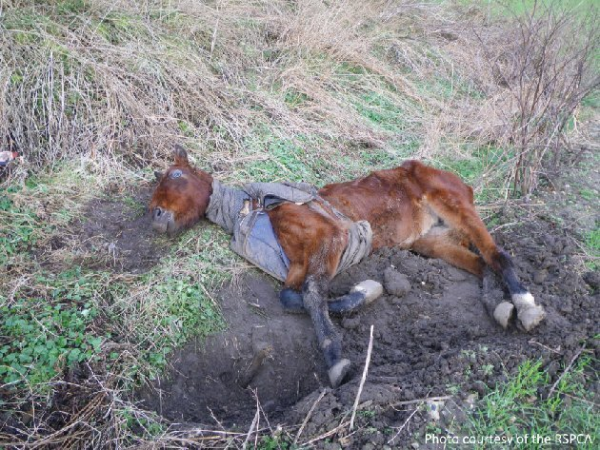 Polly is the sole survivor of the three emaciated horses found abandoned in the UK. After six months of rehabilitation, she’s finally healthy and happy. But the beginning of her story is absolutely tragic.
Polly is the sole survivor of the three emaciated horses found abandoned in the UK. After six months of rehabilitation, she’s finally healthy and happy. But the beginning of her story is absolutely tragic.
Discovered initially by the RSPCA, Polly was the most emaciated horse the Horse Trust had ever seen. After being rescued, her heroes began to see her spirit shine through; Polly proved to be very affectionate, despite her nightmarish life and her battle with malnourishment and skin issues. Jeanette Allen, Chief Executive of The Horse Trust said “It seems such a long time since Polly came to us in February. Hers was a case of cruelty of the worst kind. Her condition was so terrible that we could never be totally sure if she would pull through until recently. Every day Polly enjoys from now is a bonus. It won’t be the end of treatment for her, but it is the beginning of her new life.”
Posted in Summer 2015, Uncategorized
Leave a comment
PENGUIN SWEATERS
How long does it take to master a craft? How about 80 years? Because 109-year-old Australian Alfred Date has been knitting since the 1930s and his latest/most famous endeavor was making mini sweaters… for endangered penguins!
Back in 2013, Victoria’s Phillip Island Penguin Foundation asked for volunteers to make sweaters for the rare “little penguins.” Alfie, who has yet to learn to say no, pitched in.
Father to 7, grandparent to 20, he’s not only been an active knitter, but also a sportsman, having played golf till his 90’s.
His secret for longevity? “Waking up every morning”. See, he’s a joker, too!
Posted in Summer 2015, Uncategorized
Leave a comment
COP DOG
Stephanie Gonzales, a crime prevention specialist for the Woods Cross Police Department, told TODAY.com her family adopted young Spot — full name, Spoticus — “right before Christmas,” when her husband’s co-worker had an unexpected litter of puppies. Soon thereafter, Gonzales had her reasons for bringing Spot to work.
“I wanted to show off my new dog,” she said with a laugh. “Of course, they thought he was the cutest little thing.”
And while Spot doesn’t have any official duties, he does offer a valuable service.
“The detective walked in, he was in a grumpy mood,” Gonzales said of Spot’s first day reporting for duty. “He’d just had a horrible call, and [Spot] just runs up and completely loves him. And [Spot] does that with every officer.”
The impression Spot had on her co-workers and visitors that first day convinced Gonzales to bring Spot along on a daily basis. “Everybody who came in the office — whether you work here or wanted to make a police report — has been like, ‘Oh, what a cute dog!'” she added. “Even if you’re in the worst mood, I mean, [there’s] a little puppy. How do you not love that?”
Spot’s greatest accomplishment during his short tenure was calming a young boy who’d wandered into the police station.
“We had a lost boy who was brought to the station, probably two weeks ago,” Gonzales said. “He did not know who police were, and was very, very reluctant to come in. But as soon as he was in here, and he saw the dog, he was like, ‘Oh, a dog!’ We let him throw [Spot] a toy. He completely warmed up, finally told us his name, finally got his phone number, and we were able to get him back to his parents.”
In addition to learning a few tricks ranging from “stick ’em up” to rolling over, Spot is described by Gonzales as “spunky, willing to learn and very energetic” — that is, when he’s not napping on a giant pile of stuffed animals. “As soon as he hears the door open, he jumps off my chair to the door to greet anybody who comes,” she added. “Not one person has complained.”
Back at home, Spot continues to be affectionate, palling around with Gonzales’ husband, four children and two bullmastiffs — all dwarfing the pup who goes by “Officer Spot” on the police department’s website.
Posted in Summer 2015, Uncategorized
Leave a comment
Not So Silly
 It turns out that psychedelics aren’t just good for turning into an elf and jousting a car. Psychiatrists, psychologists and specialists in addiction and recovery from traumatic experiences have been investigating the use of hallucinogens in treatment programs, and the results indicate that psychedelics actually have practical therapeutic uses. And one drug has proven particularly useful. Repeated studies have found the psychedelic compound found in magic mushrooms, psilocybin, can help people move past major life issues — like beating alcoholism and becoming more empathetic.
It turns out that psychedelics aren’t just good for turning into an elf and jousting a car. Psychiatrists, psychologists and specialists in addiction and recovery from traumatic experiences have been investigating the use of hallucinogens in treatment programs, and the results indicate that psychedelics actually have practical therapeutic uses. And one drug has proven particularly useful. Repeated studies have found the psychedelic compound found in magic mushrooms, psilocybin, can help people move past major life issues — like beating alcoholism and becoming more empathetic.
The research: One study concluded that controlled exposure to psilocybin could have long-lasting medical and spiritual benefits. In 2011, Johns Hopkins researchers found that by giving volunteer test subjects just the right dose (not enough to give them a terrifying bad trip), they were able to reliably induce transcendental experiences in volunteers. This provoked long-lasting psychological growth and helped the volunteers to find peace in their lives, all without side effects. Nearly all of the 18 test subjects, average age 46, were college graduates. Seventy-eight percent were religious and all were interested in finding a scientific experience.
Fourteen months later, 94% said their trip on magic mushrooms was one of the five most important moments of their lives. Thirty-nine percent said it was the most important thing that had ever happened to them. Their colleagues, friends, and family members said the participants were kinder and happier; the volunteers had positive experiences ranging from more empathy and improved marriages to less drinking.
Lead author Roland Griffiths told TIME’s Healthland that “The important point here is that we found the sweet spot where we can optimize the positive persistent effects and avoid some of the fear and anxiety that can occur and can be quite disruptive.”
What’s more, the researchers say that those changes in personality are highly atypical, because personalities tend to be pretty set in stone after the age of 25-30. According to postdoctoral researcher Katherine MacLean, who contributed to the study, “This is one of the first studies to show that you actually can change adult personality.”
“Many years later, people are saying it was one of the most profound experiences of their life,” she continued. “If you think about it in that context, it’s not that surprising that it might be permanent.”
This is strictly do-not-try-this-at-home. Maclean says that “in an unsupervised setting, if that sort of fear or anxiety set in, the classic bad trip, it could be pretty dangerous.” But “On the most speculative side, this suggests that there might be an application of psilocybin for creativity or more intellectual outcomes that we really haven’t explored at all.”
More research: Within the past few decades, interest in hallucinogens has expanded from the counter-culture to dedicated, methodological research. For example, another study published in 2010 conducted research into whether psilocybin can lend some comfort to terminal cancer patients — finding evidence that it reduced death anxiety and experienced significantly less depression. According to study researcher Dr. Charles Grob, “Individuals did speak up and tell us that they felt it was of great value.” NYU’s Dr. Stephen Ross, who conducted a similar study, told SCPR that “To me it’s been some of the most remarkable clinical findings I’ve ever seen as a psychiatrist.”
Psychologist Clark Martin, Ph.D., who participated in the study as a volunteer, describes his experience below:
As well as participant Janeen Delaney:
As a result of the studies, a joint UCLA, NYU and Johns Hopkins team is conducting large-scale phase three trial next year.
Cluster headache patients say (with the backing of some doctors) that psilocybin and LSD provide them with significant relief, which researchers argue need further study.
A 2012 study published in the British Journal of Psychiatry found evidence that psilocybin “enhances autobiographical recollection,” suggesting psychiatric uses in “the recall of salient memories or to reverse negative cognitive biases.” A review of the pyschiatric research performed on psilocybin concluded that the risks of therapy were acceptable and that “most subjects described the experience as pleasurable, enriching and non-threatening.” And this year, Zürich researchers released a study in which they administered psilocybin to 25 volunteers. The treatment was found to be associated with an “increase of positive mood in healthy volunteers.”
So basically, there’s at least some hard evidence that this:
… Has the potential to be helpful, leading to introspection, self-reflection, and relief from psychiatric conditions.
Other drugs: Other illegal drugs have been linked to positive psychological outcomes. Trials with MDMA have had positive results in patients suffering from PTSD. Multidisciplinary Association for Psychedelic Studies founder Rick Doblin, who works with Iraq and Afghanistan veterans, discusses why MDMA might be the first psychedelic to “open the door into traditional psychiatry and psychology”:
So why isn’t there more evidence? The federal government is only now beginning to loosen its restrictions on medical uses of mind-altering substances, and it’s doing so very cautiously. In 2013, a group of psychiatrists released a review saying government restrictions made even researching psychoactive drugs “difficult and in many cases almost impossible.”
Posted in Summer 2015, Uncategorized
Leave a comment
Let It Be (Sold)
The childhood home of Beatles legend Paul McCartney is going under the hammer at Liverpool’s Cavern Club this month.
Fans of the icon can bid for 72 Western Avenue, in Speke, where Macca lived until the mid 1950s.
Paul was just four years old when his parents Jim and Mary moved into the humble three bedroom terrace – then a council house.
It is said to be the first house Paul remembers living at and he has spoken fondly of the six years he spent there.
The family became well known in the local area during their time at Western Avenue, due to Mary’s career as a local midwife.
Today, the ground floor of the house features a hallway, lounge, dining room and kitchen, while upstairs there are three bedrooms and a family bathroom. The property has gardens to the front and rear.
Beatles fans will have the chance to own the piece of history, when it is auctioned at a guide price of £100,000 plus, at the Cavern Club on February 26, 2015, at 7pm.
Stephen Giddins, regional sales director, of estate agent Entwistle Green, said: “We are delighted to be acting on behalf of the current owner of 72 Western Avenue, a property which has such a unique history. The Beatles, arguably one the biggest bands of all time, still attract thousands of visitors to Liverpool each year, so to get the opportunity to offer for sale Paul McCartney’s childhood home is very exciting.
“Taking into consideration the location, the property itself and the background we expect a lot of interest locally and internationally and would urge all interested parties to register their details as soon as possible to ensure they don’t miss out on this rare opportunity.”
In October 2013, John Lennon’s childhood home at 9 Newcastle Road in Wavertree, sold at auction for £480,000 and last October George Harrison’s former home 26 Upton Green, in Speke, where he lived from 1949 until the early sixties, sold for £156,000.
Posted in Summer 2015, Uncategorized
Leave a comment
MUDDSEY
It was a normal day for the builders tasked with some routine ground work near London’s Canary Wharf. They had left a couple of ground holes open, so when they heard the cries of a young animal, they knew where to look. Lo and behold, they peeked into one of the deep, muddy holes and found a small helpless animal. They had no idea it was a four-month-old fox cub caked in mud and horribly petrified.
The fox had been trapped with no chance of escape, covered in thick layers of dried mud from head to toe. The builders rescued him, and then it was off to South Essex Wildlife Hospital. There, his saviors nursed him with food, water and a much-needed bath. He was christened ‘Muddsey.’ Whereas before Muddsey was hardly recognizable as a living creature under all that sludge, let alone a fox, to see his adorable face shine through after a good cleaning is simply amazing.
The staff said, “None of us knew how long he had been down that hole — it could have been all weekend.”
Check out Muddsey’s photos below. I’m so glad this poor baby was rescued; the world is more adorable for it. Please SHARE this story with your friends, and help spread the power of animal rescue!
Posted in Summer 2015, Uncategorized
Leave a comment
ADOPTED
We all have been adopted but there are many more who need your help, So, Please visit your local animal shelter and adopted a pet.
Posted in Summer 2015, Uncategorized
Leave a comment
TINY HOUSES
Anyone who has house hunted in a major city recently has likely encountered one of two things: serious anxiety and a questionable amount of underutilized space. At least that’s what Dutch architecture firm Heijmans found when they ventured into their latest project — a set of affordable movable homes designed with budget-strapped renters in mind.
Much like the portable tiny home Spanish architecture firm Ábaton introduced to us back in 2013, the “Heijmans ONE” is a prefabricated home made out of solid wood frames and solar panels that can be built pretty much anywhere, in a single day. According to Heijmans, the compact, energy-efficient homes were designed to make use of the “derelict sites” (aka empty lots) that exist in cities like Amsterdam, and includes everything one would need to live, such as a kitchen, bathroom, living room, bedroom and even an outside patio.
Carmen Felix, a test resident who spent three months living for free in a Heijmans ONE, told the Huffington Post that the homes are perfect for people who need a temporary home but don’t want to skimp on beautiful design. “The thing I love the most about the homes is that you get the whole package,” says Felix. “It looks small, but it’s everything you need and want in a house. And all the wood gives you an immediate ‘holiday in Scandinavia vibe.'”
Heijmans, whose previous work includes an innovative glow-in-the-dark road developed the homes for people ages 25 to 35 who find it “difficult to obtain financing for a house” and may not even desire to do so. The cost, at the time of publishing, is € 700 or around $800 a month. 30 units are set to be in use in the Netherlands this fall. To see how you can obtain one of these homes, contact Heijmans.
Posted in Summer 2015, Uncategorized
Leave a comment
GOOSE BUMPS
Like sneezing, goose bumps (also known as the pilomotor reflex) represent one of your body’s automatic responses, meant to increase your chances of survival in the harsh world.
Cold environments and strong emotions (like fear) are both known to give your skin the texture of plucked poultry. When the muscle fiber connected to a hair follicle tightens, the skin surrounding the follicle puckers into a goose bump, pulling the connected hair straight up.
One effect is to generate warmth: straightened hair traps a layer of air against the skin, insulating the body. Unfortunately, human hair is so thin and short as to render the reflex virtually useless, but in hairier mammals goose bumps don’t just look silly. In fact, a cat or mouse’s battle-ready stance is related to our own pilomotor reflex. In their case the muscles are responding to perceived threats by making the animals appear larger.
Posted in Summer 2015, Uncategorized
Leave a comment
OLD CAT
Missan, 29, may be the world’s oldest cat, according to its Swedish owner who says that aside from suffering from some minor back and kidney problems, there is no reason why her furry friend won’t make it to the grand age of 30.
Missan the Swedish farm cat is turning 30 this spring and may be the world oldest living cat. By far.
“I read an article about another cat that was supposed to be the world’s oldest, and I just thought to myself: ‘mine is older!’,” Missan’s owner Åsa Wickberg, from Karlskoga, told the TT news agency.
According to the Guinness Book of World Records, Poppy from Britain was listed as the world’s oldest cat last year at the age of 24.
Wickberg said she found Missan as an abandoned kitten in 1985, with the family dog quickly adopting her as one of her own.
“She’s a bit of a loner, and has always been a bit shy and a little cautious. But she likes dogs. She takes to them very quickly.”
Although Missan’s age has somewhat taken its toll on her, with some back and kidney problems, it has been nothing that some cortisone and new eating habits haven’t been able to fix.
Wickberg is convinced Missan will make it to the age of 30.
“It feels highly likely,” she said.
Posted in Summer 2015, Uncategorized
Leave a comment
Buddah Mummy Skeleton
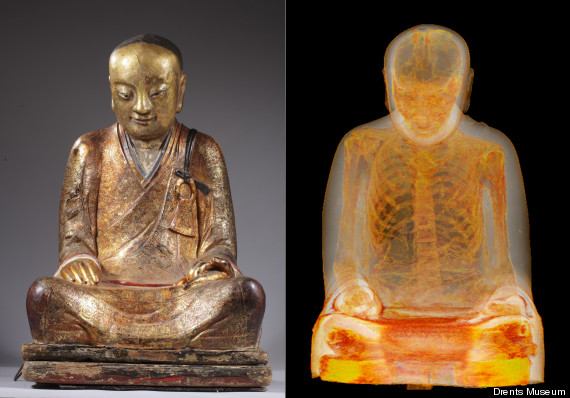 Researchers examining a nearly 1,000-year-old statue of Buddha on display in Holland discovered something very unusual hidden inside: the mummy of a meditating monk.
Researchers examining a nearly 1,000-year-old statue of Buddha on display in Holland discovered something very unusual hidden inside: the mummy of a meditating monk.
Calling the mummy its “oldest patient ever,” the Meander Medical Center in the Dutch city of Amersfoort used a CT scanner to take images of the body inside the statue and an endoscope to examine the thoracic and abdominal cavities.
The mummy is believed to be that of Liuquan, a Buddhist monk who died in China around 1,100 A.D. During their examination, the researchers found that the mummy’s internal organs had apparently been removed and the space filled with “paper scraps that were printed with ancient Chinese characters,” the hospital said in a news release.
The statue was on display as part of the “Mummies: Life Beyond Death” exhibition at the Drents Museum in the Netherlands last year, and this was the first time it had been let out of China.
A brochure from the event says this may be a case of self-mummification.
These monks would typically subsist on water, seeds and nuts for 1,000 days, then roots, pine bark and a toxic tea made from sap of the Chinese lacquer tree for another 1,000 days while sealed inside a stone tomb, according to CNET.
They would breathe through a small tube and ring a bell to let everyone know they were still alive, Business Insider Australia reported. Once the ringing stopped, they’d be left inside for another 1,000 days.
Those who were mummified are said to have achieved enlightenment, Smithsonian reported.
It’s not clear whether Liuquan self-mummified, but the removal of the organs and presence of scraps of paper suggest that may not have been the case.
The statue is now on display in Hungary at the Natural History Museum.
Posted in Summer 2015, Uncategorized
Leave a comment
Dead…Or Meditating?
 It’s weird enough to discover a mummy that’s been perfectly preserved in full lotus posture. But the story of a mummified monk found in Mongolia only gets stranger. Not only was the body discovered when a man tried to sell it on the black market, but some Buddhists claim that the mummified monk isn’t really dead at all.
It’s weird enough to discover a mummy that’s been perfectly preserved in full lotus posture. But the story of a mummified monk found in Mongolia only gets stranger. Not only was the body discovered when a man tried to sell it on the black market, but some Buddhists claim that the mummified monk isn’t really dead at all.
The BBC reports that the mummy, which is being analyzed by forensics experts at the National Center of Forensic Expertise in Mongolia, was found wrapped in cattle skins and is remarkably well-preserved. That could be due to the freezing temperatures in far-flung Mongolia…or could something else be at play?
Barry Kerzin is a Buddhist monk himself and the physician to the Dalai Lama. He tells the Siberian Times that he thinks the mummy is in a state of “tukdam,” a deep meditative state that’s one step away from enlightenment:
I had the privilege to take care of some meditators who were in a tukdam state.
If the person is able to remain in this state for more than three weeks—which rarely happens—his body gradually shrinks, and in the end all that remains from the person is his hair, nails, and clothes. Usually in this case, people who live next to the monk see a rainbow that glows in the sky for several days. This means that he has found a ‘rainbow body’. This is the highest state close to the state of Buddha.
So how long might this trance have lasted? Some speculate that the monk was the teacher of Lama Dashi-Dorzho Itigilov, a monk who was found mummified in 2002. Itigilov reportedly told his students he was going to die and ordered them to exhume his remains at a later date. He began meditating, died, and was found in pristine condition 88 years later.
The jury may be out on whether the Mongolian mummy is just dead or about to reach enlightenment, but one thing is clear: it’s not that weird to find bizarre human remains. From screaming mummies to bodies that still contain organs and blood thousands of years after they were buried, archaeologists find frightening remains all the time. Who knows what other mysteries lie buried beneath the earth?
Posted in Summer 2015, Uncategorized
Leave a comment
“Not With A Bang, But A Whimper”
If a new theory turns out to be true, the universe may not have started with a bang.
In the new formulation, the universe was never a singularity, or an infinitely small and infinitely dense point of matter. In fact, the universe may have no beginning at all.
“Our theory suggests that the age of the universe could be infinite,” said study co-author Saurya Das, a theoretical physicist at the University of Lethbridge in Alberta, Canada.
The new concept could also explain what dark matter — the mysterious, invisible substance that makes up most of the universe — is actually made of, Das added.
Big Bang under fire
According to the Big Bang theory, the universe was born about 13.8 billion years ago. All the matter that exists today was once squished into an infinitely dense, infinitely tiny, ultra-hot point called a singularity. This tiny fireball then exploded and gave rise to the early universe.
The singularity comes out of the math of Einstein’s theory of general relativity, which describes how mass warps space-time, and another equation (called Raychaudhuri’s equation) that predicts whether the trajectory of something will converge or diverge over time. Going backward in time, according to these equations, all matter in the universe was once in a single point — the Big Bang singularity.
But that’s not quite true. In Einstein’s formulation, the laws of physics actually break before the singularity is reached. But scientists extrapolate backward as if the physics equations still hold, said Robert Brandenberger, a theoretical cosmologist at McGill University in Montreal, who was not involved in the study.
“So when we say that the universe begins with a big bang, we really have no right to say that,” Brandenberger told Live Science.
There are other problems brewing in physics — namely, that the two most dominant theories, quantum mechanics and general relativity, can’t be reconciled.
Quantum mechanics says that the behavior of tiny subatomic particles is fundamentally uncertain. This is at odds with Einstein’s general relativity, which is deterministic, meaning that once all the natural laws are known, the future is completely predetermined by the past, Das said.
And neither theory explains what dark matter, an invisible form of matter that exerts a gravitational pull on ordinary matter but cannot be detected by most telescopes, is made of.
Das and his colleagues wanted a way to resolve at least some of these problems. To do so, they looked at an older way of visualizing quantum mechanics, called Bohmian mechanics. In it, a hidden variable governs the bizarre behavior of subatomic particles. Unlike other formulations of quantum mechanics, it provides a way to calculate the trajectory of a particle.
Using this old-fashioned form of quantum theory, the researchers calculated a small correction term that could be included in Einstein’s theory of general relativity. Then, they figured out what would happen in deep time. The upshot? In the new formulation, there is no singularity, and the universe is infinitely old.
A way to test the theory
One way of interpreting the quantum correction term in their equation is that it is related to the density of dark matter, Das said.
If so, the universe could be filled with a superfluid made of hypothetical particles, such as the gravity-carrying particles known as gravitons, or ultra-cold, ghostlike particles known as axions, Das said.
One way to test the theory is to look at how dark matter is distributed in the universe and see if it matches the properties of the proposed superfluid, Das said.
“If our results match with those, even approximately, that’s great,” Das told Live Science.
However, the new equations are just one way to reconcile quantum mechanics and general relativity. For instance, a part of string theory known as string gas cosmology predicts that the universe once had a long-lasting static phase, while other theories predict there was once a cosmic “bounce,” where the universe first contracted until it reached a very small size, then began expanding, Brandenberg said.
Either way, the universe was once very, very small and hot.
“The fact that there’s a hot fireball at very early times: that is confirmed,” Brandenberg told Live Science. “When you try to go back all the way to the singularity, that’s when the problems arise.”
The new theory was explained in a paper published Feb. 4 in the journal Physical Letters B, and another paper that is currently under peer review, which was published in the preprint journal arXiv.
Posted in Summer 2015, Uncategorized
Leave a comment
Growling
Growling is a valuable means of communication for a dog – something that dog owners should appreciate and respect rather than punish. Of course, we don’t want our dog to growl at us, but neither do we want him to fail to growl if something makes him uncomfortable; that’s very important information in a successful canine-human relationship.
Don’t punish your dog for growling; you need to know when he’s uncomfortable so he’s not pushed past his ability to cope. Note: Play-growling is perfectly acceptable. As long as you’re sure he’s playing, there’s no need to modify this behavior.
It’s very common for dog owners to punish their dogs for growling. Unfortunately, this often suppresses the growl – eliminating his ability to warn us that he’s about to snap, literally and figuratively. On other occasions, punishing a growling, uncomfortable dog can induce him to escalate into full-on aggression.
So, if you’re not supposed to punish your dog for growling, what are you supposed to do? The next time your dog growls at you, try this:
1.) Stop. Whatever you’re doing, stop. If your dog’s growl threshold is near his bite threshold – that is, if there’s not much time between his growl and his bite, get safe. If his growl doesn’t mean a bite is imminent, stop what you’re doing but stay where you are. Wait until he relaxes, then move away, so you’re rewarding the relaxed behavior rather than the growl.
2.) Analyze the situation. What elicited the growl? Were you touching or grooming him? Restraining him? Making direct eye contact? Taking something away from him? Making him do something?
3.) Figure out a different way to accomplish your goal without eliciting a growl. Lure him rather than physically pushing or pulling him. Have someone else feed him treats while you touch, groom, or restrain him. If you don’t have to do whatever it was that elicited the growl, don’t – until you can convince him that it’s a good thing rather than a bad thing.
4.) Evaluate the stressors in your dog’s world and reduce or eliminate as many of them as possible. For example, if your dog is unaccustomed to strangers, then having your sister and her husband and three kids as houseguests for the past week would undoubtedly stress your dog. Noise-phobic dogs might be under a strain if city crews have been digging up a nearby street with heavy equipment or there was a thunderstorm last night. The vacuum cleaner is a common stressor for dogs. A loud argument between you and your spouse could stress your dog as well as you, and your stress is stressful to your dog. Harsh verbal or physical punishment, an outburst of aroused barking at the mail carrier, fence fighting with another dog. The list could go on and on.
Keep in mind that stress causes aggression, and stressors are cumulative; it’s not just the immediate stimulus that caused the growl, but a combination of all the stressors he’s experienced in the past few days. This explains why he may growl at you today when you do something, but he didn’t growl last week when you did the exact same thing. The more stressors you can remove overall, the less likely he is to growl the next time you do whatever it was that elicited the growl this time.
5.) Institute a behavior modification program to change his opinion about the thing that made him growl. One way to do this is to use counter-conditioning and desensitization to convince him the bad thing is a good thing (see “Fear Itself,” WDJ April 2007).
Another way is through the careful use of negative reinforcement as in a Constructional Aggression Treatment (CAT) program to teach him a new behavioral strategy when presented with the discomfort-causing stimulus. (For much more detail about CAT programs, see “Building Better Behavior,” May 2008).
If you need help to create and implement a behavior modification protocol, contact a qualified behavior professional who is experienced and successful in modifying aggressive behavior with positive, dog-friendly techniques. Good places to start your search are ccpdt.org and trulydogfriendly.com, or my own trainer referral lists at peaceablepaws.com.
Posted in Summer 2015, Uncategorized
Leave a comment
HAPPY DIRT
Prozac may not be the only way to get rid of your serious blues. Soil microbes have been found to have similar effects on the brain and are without side effects and chemical dependency potential. Learn how to harness the natural antidepressant in soil and make yourself happier and healthier. Read on to see how dirt makes you happy.
Natural remedies have been around for untold centuries. These natural remedies included cures for almost any physical ailment as well as mental and emotional afflictions. Ancient healers may not have known why something worked but simply that it did. Modern scientists have unraveled the why of many medicinal plants and practices but only recently are they finding remedies that were previously unknown and yet, still a part of the natural life cycle. Soil microbes and human health now have a positive link which has been studied and found to be verifiable.
Soil Microbes and Human Health
Did you know that there’s a natural antidepressant in soil? It’s true. Mycobacterium vaccae is the substance under study and has indeed been found to mirror the effect on neurons that drugs like Prozac provide. The bacterium is found in soil and may stimulate serotonin production, which makes you relaxed and happier. Studies were conducted on cancer patients and they reported a better quality of life and less stress.
Serotonin has been linked depression, anxiety, obsessive compulsive disorder and bipolar problems. The bacterium appears to be a natural antidepressant in soil and has no adverse health effects. These antidepressant microbes in soil may be as easy to use as just playing in the dirt.
Most avid gardeners will tell you that their landscape is their “happy place” and the actual physical act of gardening is a stress reducer and mood lifter. The fact that there is some science behind it adds additional credibility to these garden addicts’ claims. The presence of a soil bacteria antidepressant is not a surprise to many of us who have experienced the phenomenon ourselves. Backing it up with science is fascinating, but not shocking, to the happy gardener.
Mycrobacterium antidepressant microbes in soil are also being investigated for improving cognitive function, Crohn’s disease and even rheumatoid arthritis.
How Dirt Makes You Happy
Antidepressant microbes in soil cause cytokine levels to rise, which results in the production of higher levels of serotonin. The bacterium was tested both by injection and ingestion on rats and the results were increased cognitive ability, lower stress and better concentration to tasks than a control group.
Gardeners inhale the bacteria, have topical contact with it and get it into their bloodstreams when there is a cut or other pathway for infection. The natural effects of the soil bacteria antidepressant can be felt for up to 3 weeks if the experiments with rats are any indication. So get out and play in the dirt and improve your mood and your life.
Posted in Summer 2015, Uncategorized
Leave a comment
DOGS QUOTES
 “Dogs never bite me. Just humans.”
“Dogs never bite me. Just humans.”
—Marilyn Monroe
Dogs are commonly referred to as “man’s best friend,” and 50 famous people also had choice and lasting words for our four-legged colleagues.
“You can say any foolish thing to a dog, and the dog will give you a look that says, ‘Wow, you’re right! I never would’ve thought of that!’”
—Dave Barry (author, Dave Barry Hits Below the Beltway: A Vicious and Unprovoked Attack on Our Most Cherished Political Institutions)
“A dog teaches a boy fidelity, perseverance, and to turn around three times before lying down.”
—Robert Benchley (humorist and actor, Broadway Melody of 1938)
“A dog is the only thing on earth that loves you more than he loves himself.”
—Josh Billings (a.k.a. Henry Wheeler Shaw; humorist and lecturer)
“Hounds follow those who feed them.”
―Otto von Bismarck (1st Chancellor of Germany)
“Dogs are not our whole life, but they make our lives whole.”
—Roger Caras (photographer and writer)
“Every dog has his day, unless he loses his tail, then he has a weak-end.”
—June Carter Cash (singer)
“Dogs are wise. They crawl away into a quiet corner and lick their wounds and do not rejoin the world until they are whole once more.”
—Agatha Christie (author, Death on the Nile)
“The world would be a nicer place if everyone had the ability to love as unconditionally as a dog.”
―M.K. Clinton (author, The Returns)
“The better I get to know men, the more I find myself loving dogs.”
—Charles de Gaulle (former President of the French Republic)
“The only creatures that are evolved enough to convey pure love are dogs and infants.”
—Johnny Depp (actor, Pirates of the Caribbean)
“Dogs are better than human beings because they know but do not tell.”
—Emily Dickinson (poet, “Hope is the Thing with Feathers”)
“What counts is not necessarily the size of the dog in the fight; it’s the size of the fight in the dog.”
—Dwight D. Eisenhower (34th President of the United States)
“Why does watching a dog be a dog fill one with happiness?”
—Jonathan Safran Foer (author, Extremely Loud and Incredibly Close)
“There are three faithful friends: an old wife, an old dog, and ready money.”
—Benjamin Franklin (Founding Father of the United States)
“Dogs love their friends and bite their enemies, quite unlike people, who are incapable of pure love and always have to mix love and hate.”
—Sigmund Freud (psychoanalyst)
“Women and cats will do as they please, and men and dogs should relax and get used to the idea.”
—Robert A. Heinlein (author, Starship Troopers)
“When an eighty-five pound mammal licks your tears away, then tries to sit on your lap, it’s hard to feel sad.”
―Kristan Higgins (author, In Your Dreams)
“To his dog, every man is Napoleon; hence the constant popularity of dogs.”
—Aldous Huxley (author, Brave New World)
“There are times when even the best manager is like the little boy with the big dog — waiting to see where the dog wants to go so he can take him there.”
—Lee Iacocca (former president and CEO of Chrysler)
“Anybody who doesn’t know what soap tastes like never washed a dog.”
—Franklin P. Jones (humorist and PR executive)
“A dog can’t think that much about what he’s doing, he just does what feels right.”
―Barbara Kingsolver (author, Animal Dreams)
“When the Man waked up he said, ‘What is Wild Dog doing here?’ And the Woman said, ‘His name is not Wild Dog any more, but the First Friend, because he will be our friend for always and always and always.'”
—Rudyard Kipling (author, The Jungle Book)
“Once you have had a wonderful dog, a life without one, is a life diminished.”
—Dean Koontz (author, Whispers)
“Don’t accept your dog’s admiration as conclusive evidence that you are wonderful.”
—Ann Landers (a.k.a. Eppie Lederer; famous advice columnist)
“I care not for a man’s religion whose dog and cat are not the better for it.”
—Abraham Lincoln (16th President of the United States)
“A bone to the dog is not charity. Charity is the bone shared with the dog, when you are just as hungry as the dog.”
—Jack London (author, The Call of the Wild)
“Outside of a dog, a book is man’s best friend. Inside of a dog it’s too dark to read.”
—Groucho Marx (comedian)
“Dogs don’t rationalize. They don’t hold anything against a person. They don’t see the outside of a human but the inside of a human.”
—Cesar Millan (dog trainer)
“Dogs never bite me. Just humans.”
—Marilyn Monroe (actress, Some Like It Hot)
“No one appreciates the very special genius of your conversation as the dog does.”
—Christopher Morley (author, Kitty Foyle)
“If you think dogs can’t count, try putting three dog biscuits in your pocket and then give him only two of them.”
—Phil Pastoret (author, Our Boarding House)
“I think dogs are the most amazing creatures; they give unconditional love. For me, they are the role model for being alive.”
—Gilda Radner (comedienne)
“If there are no dogs in Heaven, then when I die I want to go where they went.”
—Will Rogers (actor, A Connecticut Yankee)
“The average dog is a nicer person than the average person.”
—Andy Rooney (contributor, 60 Minutes)
“I wonder if other dogs think poodles are members of a weird religious cult.”
—Rita Rudner (comedienne)
“Happiness is a warm puppy.”
—Charles M. Schulz (cartoonist, Peanuts)
“If you eliminate smoking and gambling, you will be amazed to find that almost all an Englishman’s pleasures can be, and mostly are, shared by his dog.”
—George Bernard Shaw (playwright)
“I’ve seen a look in dogs’ eyes, a quickly vanishing look of amazed contempt, and I am convinced that basically dogs think humans are nuts.”
—John Steinbeck (author, The Grapes of Wrath)
“You think dogs will not be in heaven? I tell you, they will be there long before any of us.”
—Robert Louis Stevenson (author, Treasure Island)
“Dogs got personality. Personality goes a long way.”
—Quentin Tarantino (director and screenwriter, Pulp Fiction)
“Some of my best leading men have been dogs and horses.”
—Elizabeth Taylor (actress, Cleopatra)
“If I have any beliefs about immortality, it is that certain dogs I have known will go to heaven, and very, very few persons.”
—James Thurber (author, “The Secret Life of Walter Mitty”)
“A hungry dog hunts best.”
—Lee Trevino (golfer)
“If you want a friend in Washington, get a dog.”
—Harry S. Truman (33rd President of the United States)
“Heaven goes by favor. If it went by merit, you would stay out and your dog would go in.”
—Mark Twain (author, The Adventures of Tom Sawyer)
“Ever consider what our dogs must think of us? I mean, here we come back from a grocery store with the most amazing haul, chicken, pork, half a cow. They must think we’re the greatest hunters on earth!”
—Anne Tyler (author, The Accidental Tourist)
“A dog will teach you unconditional love. If you can have that in your life, things won’t be too bad.”
—Robert Wagner (actor, The Longest Day)
“Let sleeping dogs lie.”
—Robert Walpole (first Prime Minister of Great Britain)
Posted in Summer 2015, Uncategorized
Leave a comment
TRAUMATIC BRAIN INJURY (TBI)
It’s fairly well known that traumatic brain injury — a complex injury caused by a jolt or blow to the head — disproportionately affects athletes and soldiers. But what about the 1 in 4 women in the U.S. who are estimated to be survivors of domestic violence?
What Are The Symptoms Of TBI?
According to Hirsch Handmaker, a radiologist who is studying the link between domestic violence and TBI, as many as 20 million women each year may suffer from TBI from abusive relationships. Symptoms of TBI include headaches, double vision, imbalance and decreased motor ability, as well as problems with memory, planning, learning, aggression, irritability and depression, he said.
Women who suspect they may have undiagnosed brain injury should see their primary care physician and get a referral for testing, said Robert Knechtel, M.D., interim director of the Sojourner BRAIN program, which launched an ambitious effort to research TBI in domestic violence survivors this week. Women may be referred to an ophthalmologist, audiologist, cognitive therapist or a neurologist for testing, depending on their symptoms.
Knechtel said the most important thing is to be honest with your doctor about the cause of injury. “Don’t be ashamed of telling the physician that you’ve been a victim of domestic violence,” he said. “They need to get the complete picture.”
Make A List Of Injuries, Including When They Happened
Knechtel recommends that women write down a list of all the times they were hit in the head and what part of the head was hit, if it is safe to do so. TBI affects memory, so for some women, this may be a difficult task. But in order to treat TBI, he said, doctors need to pinpoint exactly where the injury is located in the brain.
Women should also note if they have ever been strangled — a common tactic by abusers and a predictor of future lethal violence. “Strangulation is a cause of traumatic brain injury, and you don’t really even need to lose consciousness,” Knechtel said. “If you have decrease of blood flow to the brain, you can have parts of the brain that are affected.”
Ask Your Doctor Any Questions About Your Injuries. Make Sure They Are Answered.
Write down questions for the doctor before the visit, Knechtel said, and make sure they are answered before you leave. While there is growing awareness of TBI in military and athletes, he said, many health care providers are still not educated about brain injury caused by domestic violence and may downplay women’s symptoms, or chalk them up to stress. “Insist on testing, and on having an investigation done,” Knechtel said. “If you are being ignored, you may need to find a different doctor.”
If a woman has an acute injury, she should seek help immediately at an emergency room. “The first 24 to 48 hours are critical from a concussion standpoint,” he said.
If You Experience A Concussion, It’s OK To Sleep And Rest
Knechtel cautioned that women are especially vulnerable to brain injury in the aftermath of a concussion, and should do whatever is possible to avoid a secondary head injury while in recovery. “The additive nature of concussions over a short period of time can significantly impact long-term brain damage,” he said, comparing a woman who is discharged from the hospital and subsequently assaulted to a football player who returns to active play before his brain is healed.
Following a concussion, he said, it can be helpful to lie down in a quiet, dark room and sleep. Despite what many of us were told growing up, letting someone fall asleep after a concussion is actually exactly what the brain needs.
Contact Your Local Domestic Violence Coalition
Allie Bones, the CEO of the Arizona Coalition to End Sexual and Domestic Violence, recommends that women who have TBI symptoms reach out to their state domestic violence coalition to see what support services are available in their area.
“The coalitions tend to have the best information about what the domestic violence programs across the state offer,” she said. “These days, most programs are trying to focus on a trauma-informed approach, coming from the perspective that people who have experienced trauma have a lot of different ways their brain may be affected.”
Connecting with a domestic violence coalition can give women an opportunity to talk about their experiences, and to get support with some of the typical problems that domestic violence survivors struggle with, like finding affordable housing and filing for divorce, which can become even more unmanageable with a brain injury.
powerwheel
Domestic violence power and control wheel. Credit: Domestic Abuse Intervention Project
Seek Out Help With Legal Issues
Symptoms of TBI can make simple tasks, such as filling out forms and remembering dates and times, challenging. For women who are involved in court cases due to their abuse, brain injury can make an already confounding process even harder.
“Having a legal advocate who can help them navigate those processes is really important,” Bones said, adding that a state coalition should be able to help put survivors in touch with advocates who can assist them. “They might not be able to do it themselves.”
Never Give Up Hope
Chris Nowinski, executive director of the Sports Legacy Institute, had one message to women who have signs of brain injury: Don’t give up hope.
“Whatever your symptoms are, there is treatment to make you feel better, and you should aggressively pursue it,” he said. “Sometimes symptoms can last for years and slowly fade away.”
Nowinski said it is important for women who may have TBI to be educated so they can adjust how they live, and educate those around them to better understand their medical condition.
“There’s a lot of people in this country living with the effects of traumatic brain injury,” he said. “We are all trying to get connected and raise awareness and advance research and get better treatment. We deserve it.”
Need help? In the U.S., call 1-800-799-SAFE (7233) for the National Domestic Violence Hotline.
Posted in Clarion Causes, Summer 2015
Leave a comment
THE DIDLEY BOW
Bo Diddley was born Ellas Bates. He had his name changed to Ellas McDaniels when he was adopted. He took his stage name from a one-stringed Deep South instrument, the Diddley Bow. Diddley was trained on the violin as a child, but switched to guitar (to emulate John Lee Hooker) when his sister gave him one for a Christmas present.
The diddley bow is a single-stringed American instrument which influenced the development of the blues sound. It consists of a single string of baling wire tensioned between two nails on a board over a glass bottle, which is used both as a bridge and as a means to magnify the instrument’s sound.
It was traditionally considered a starter or children’s instrument in the Deep South, especially in the African American community and is rarely heard outside the rural South, but it may have been influenced to some degree by West African instruments.[1] Other nicknames for this instrument include “jitterbug” or “one-string”, while an ethnomusicologist would formally call it a “monochord zither”.
One notable performer of the instrument was the Mississippi blues musician Lonnie Pitchford, who used to demonstrate the instrument by stretching a wire between two nails hammered into the wood of a vertical beam making up part of the front porch of his home. Pitchford’s headstone, placed on his grave in 2000 by the Mt. Zion Memorial Fund, is actually designed with a playable diddley bow on the side as requested by Pitchford’s family.
Other notable traditional players include Lewis Dotson, Glen Faulkner, Jessie Mae Hemphill, Compton Jones, Eddie “One String” Jones, Napoleon Strickland, Moses Williams, James “Super Chikan” Johnson and “One String Sam” Wilson. Willie Joe Duncan was also notable for his work with a very large electrified diddley bow he called a Unitar. Some members of the Motown band “The Funk Brothers” are said to have learned to play the guitar on the diddley bow. Great bluesman Buddy Guy learned to play music on a two-string homemade diddley bow before getting his first guitar (a Harmony acoustic).
Recent performers who use similar instruments include New York City-based jazz pianist Cooper-Moore, American bluesman Seasick Steve, Samm Bennett, Danny Kroha, One String Willie, and blind musician Velcro Lewis. Jack White makes one at the beginning of the movie It Might Get Loud, then after playing it quips “Who says you need to buy a guitar?”. Seasick Steve recorded a tribute song to his diddley bow on his song “Diddley Bo” from his 2009 album, Man From Another Time.
Posted in Clarion Causes, Summer 2015
Leave a comment
CORONADO – THE FIFTY MILLION DOLLAR CITY
- By Alan Graham
- Coronado’s total operating budget for 2013-14 is projected to be $52.2 million
- Total revenues projected at $56.7 million, with a surplus above operating of $4.5 million
- An additional $4.9 million has been approved to fund capital improvement projects
- The General Fund, the City’s largest operating fund, has projected revenues of $42 mil- lion and projected expenditures of $41.2 million
- This leaves the General Fund with a projected surplus of $793,000
- General Fund reserves are projected at $36.9 million
Orange Avenue commercial corridor Bike Corral
Budget Highlights
- General Fund revenue comes mostly from property and hotel taxes
- More than 5 percent, or $2.7 million, of Coronado’s discretionary revenue has been allotted to theCapital Improvement Program
- General Fund revenue is projected to increase 5.4 percent over 2012-13
- Budget allows for a high level of service while increasing reserve funding for facility replacement
- Employee compensation is programmed at the same level as 2012-13
- Projected General Fund balance (reserve) at the end of the year equals nearly 90 percent of expendi- tures
- Twenty-four new capital projects are funded in the 2013-14 budget
- The annual contribution to long-term facilities replacement has doubled in 2013-14 to $1.3 million
- $18.2 million has been budgeted for Public Safety and nearly $5 million for Culture and Leisure
- Coronado provides more than $1 million in grant funding to community-serving organizations
Property Taxes
Transient Occupancy Taxes Sales & Use Taxes Franchise Taxes
Other Taxes
Investment Earnings Licenses & Permits Charges for Services Intergovernmental
& Reimbursements Transfers in from Other Funds All Other
Total General Fund Revenue
22,605 11,600 2,70
1,260
1,034 136 437
$42,047
4,392 1,281
Wastewater Revenue Wastewater Expenditures Wastewater CIP
Golf Course Revenue Golf Course Expenditures Golf Course CIP
Stormwater Revenue Stormwater Expenditures Stormwater CIP
(Police, Fire & Beach Lifeguards) 18,272 Community Development
(Planning & Building) Construction, Maintenance &
Transportation Culture & Leisure
Contingency
Total General Fund Expenditures
869
11,294 4,996
150 $41,254
The Wastewater and Golf Course operations are supported entirely by user fees and charg- es. Stormwater services are supported by fees and general tax revenue.
Top-paid employees
City Manager City Manager $215,489
Director Of Fire Services
Standardized position: Fire Chief
Fire Services $164,215
Police Sergeant Police Services $163,700
Police Sergeant Police Services $163,320
Director Of Admin. Services Administrative Services $160,758
Director Of Community Development, Redevelopment & Housing Community Development $157,104
Director Of Engineering & Project Development Engineering $156,737
Assistant City Manager City Manager $155,407
Police Sergeant Police Services $148,565
Director Of Public Services Public Services $147,633
Fire Captain Fire Services $145,735
Police Commander Police Services $145,717
Fire Captain Fire Services $143,159
Police Commander Police Services $143,049
Fire Captain Fire Services $141,987
Fire Battalion Chief Fire Services $141,800
Fire Captain Fire Services $138,897
Police Commander Police Services $138,840
Police Sergeant Police Services $135,392
Police Sergeant Police Services $135,327
Police Sergeant Police Services $134,163
Police Sergeant Police Services $134,137
Director Of Recreation Recreation Services $133,563
Principal Engineer Engineering $127,603
Director Of Library Services Library Services $126,704
Fire Battalion Chief Fire Services $126,202
Capital Projects Manager Engineering $122,286
Senior Police Officer Police Services $122,205
Police Officer Police Services $120,370
Finance Manager Administrative Services $119,455
Police Officer Police Services $118,730
Fire Engineer Fire Services $117,258
Fire Engineer Fire Services $116,247
Fire Captain Fire Services $115,336
Fire Fighter – Paramedic Fire Services $113,581
Police Sergeant Police Services $112,614
Police Services $112,523
Fire Fighter – Paramedic Fire Services $112,244
Inform. Technology Manager Administrative Services $112,235
Director Of Golf Course Operations Golf $112,125
Fire Fighter – Paramedic Fire Services $112,114
Fire Fighter – Paramedic Fire Services $112,049
Fire Engineer Fire Services $111,909
Police Officer Police Services $110,709
Fire Engineer Fire Services $108,886
Golf Maintenance Supervisor Golf $108,726
Public Service Supervisor Public Services $108,157
Police Officer Police Services $107,854
Police Officer Police Services $106,270
Senior Police Officer Police Services $105,214
Sr. Management Analyst City Manager $104,248
Police Officer Police Services $103,536
Fire Captain Fire Services $103,199
City Clerk City Clerk $102,384
Fire Fighter – Paramedic Fire Services $102,279
Sr. Management Analyst Community Development $102,266
Fire Fighter Fire Services $102,219
Fire Fighter – Paramedic Fire Services $101,753
Senior Police Officer Police Services $101,442
Fire Engineer Fire Services $101,253
Police Officer Police Services $100,973
Fire Fighter – Paramedic Fire Services $99,410
Police Officer Police Services $99,278
Fire Fighter – Paramedic Fire Services $99,168
Master Mechanic (Terminal) Public Services $99,151
Police Officer Police Services $98,171
Police Services $96,788
Fire Fighter Fire Services $96,622
Police Officer Police Services $95,533
Police Officer Police Services $95,033
Senior Police Officer Police Services $93,751
Fire Fighter – Paramedic Fire Services $93,687
Fire Fighter – Paramedic Fire Services $92,687
Police Officer Police Services $92,680
Police Officer Police Services $90,890
Office Specialist Golf $23,436
Beach Lifeguard Fire Services $23,410
Office Assistant II Recreation Services $23,187
Beach Lifeguard Fire Services $22,968
Recreation Leader Recreation Services $22,481
Aquatics Instructor Recreation Services $22,324
Aquatics Instructor Recreation Services $22,253
Maintenance Worker II Public Services $22,216
Librarian I Library Services $21,757
Recreation Specialist Recreation Services $21,719
Recreation Specialist Recreation Services $21,437
Beach Lifeguard Fire Services $21,052
Library Assistant II Library Services $21,011
Accounting Technician Public Services $20,856
Police Officer Police Services $20,340
Building Inspec Supervisor Community Development $20,235
Library Assistant I Library Services $20,059
Administrative Secretary Library Services $20,026
Librarian I Library Services $19,693
Library Assistant I Library Services $19,421
Library Assistant I Library Services $19,395
Aquatics Instructor Recreation Services $19,216
Kennel Assistant Police Services $18,754
Library Assistant I Library Services $18,699
Posted in Clarion Causes, Summer 2015
Leave a comment
RAPUNZELS
 A group of women hailed as ‘America’s first celebrity models’ tantalized audiences during the 19th century, not with provocative dance routines or barely-there outfits, but with their Rapunzel-like locks.
A group of women hailed as ‘America’s first celebrity models’ tantalized audiences during the 19th century, not with provocative dance routines or barely-there outfits, but with their Rapunzel-like locks.
The Sutherland Sisters, consisting of Sarah, Victoria, Isabella, Grace, Naomi, Mary and Dora, each boasted ankle-skimming hair which apparently measured a collective 37 feet in length.
The siblings’ biographer, Brandon Stickney reveals how they became one of the ‘sexiest’ performing acts in the U.S. and their patented ‘miracle’ hair-growing tonic scored sales of over $3million.
Girls, let down your hair: The seven Sutherland Sisters, Sarah, Victoria, Isabella, Grace, Naomi, Mary and Dora photographed with their father Reverend Fletcher
Girls, let down your hair: The seven Sutherland Sisters, Sarah, Victoria, Isabella, Grace, Naomi, Mary and Dora photographed with their father Reverend Fletcher
The sisters, along with their only brother, Charles, were born between 1851 and 1865 in the rural farming community of Cambria, New York.
In an effort to dig the family out of poverty their father, Reverend Fletcher Sutherland, pushed them into show business, originally encouraging their singing talents.
However, after they joined the circus company, Barnum & Bailey, where they were billed as the ‘the seven most pleasing wonders of the world’, he realized the audiences were more enthralled by their flowing tresses than their vocal prowess.
Magic formula: It was rumored that the the girl’s mother, Mary, who died in 1867, applied an ‘offensive-smelling’ ointment on their hair to stimulate growth when they were growing up
Biographer, Mr Stickney writes: ‘Though their shows, consisting of church music, parlor songs and drawing-room ballads, received rave reviews, it was ultimately the girls’ hair that seemed the biggest draw.’
It was rumored that their mother, Mary, who died in 1867, applied an ‘offensive-smelling’ ointment on their hair to stimulate growth when they were growing up.
And in a bid to capitalize on public interest, Mr Sutherland had the idea of producing and selling a hair tonic with the family name as its signature.
According to Hair Raising Stories, the academic journal The Pharmaceutical Era analyzed the The Seven Sutherland Sisters Hair Grower and published its findings in 1893.
Forgotten past: The Sutherland sisters went on to make a fortune from their trademarked hair care products and lived lives of great excess
The solution was made up of 56per cent witch-hazel water, 44per cent bay rum, and a little bit of salt, magnesia, and hydrochloric acid.
A label on the glass bottle reportedly read: ‘To our patrons: The enclosed preparation is manufactured and used by ourselves and we recommend it as the best in the world.’
In addition to using the sisters as living proof, the name and portrait of Reverend Sutherland appeared in most of the advertising.
‘The preacher’s title fostered a label of pious honesty to accompany their claims,’ Mr Stickney reveals.
The hair care products were sold between 50 cents and $1.50 a piece, which could be a day to nearly a whole week’s salary in the 1880s.
Thanks to their marketing tactics the Sutherlands sold 2.5million bottles of hair grower by 1890, just about four years after production began, and more than $3million in reported income was realized.
Pieces of history: On eBay a glass bottle once containing The Seven Sutherland Sisters Hair Grower is listed at $249.99 (left), while a 1903 newspaper advert for their ointment is priced at $9.99 (right)
According to Mr Stickney, the Sutherland women achieved such celebrity status, they dominated the front page of newspapers and were featured in titles including Cosmopolitan, The New Yorker, The New York Times and Time.
The Niagara County Historical Society reports that five years after their father’s death around 1888, the Sutherland Sisters built a lavish mansion in their hometown of Cambria.
The house had 14 rooms, hot and cold running water, beds imported from Europe, hardwood floors, chandeliers, as well as an attic room for the cook and maids.
However, on January 24, 1938, the house burned to the ground, ‘taking many relics of The Sisters’ glory days with it’.
The Sutherland family continued to live lives of extreme excess and, although they earned millions of dollars in their lifetimes from their hair care products, they all died destitute.
Today many items from their now defunct beauty range regularly crop up at auction.
On eBay a glass bottle once containing The Seven Sutherland Sisters Hair Grower is listed at $249.99, while a 1903 newspaper advert for their ointment is priced at $9.99.
Posted in Summer 2015
Leave a comment
THE CAVERN MODERNE
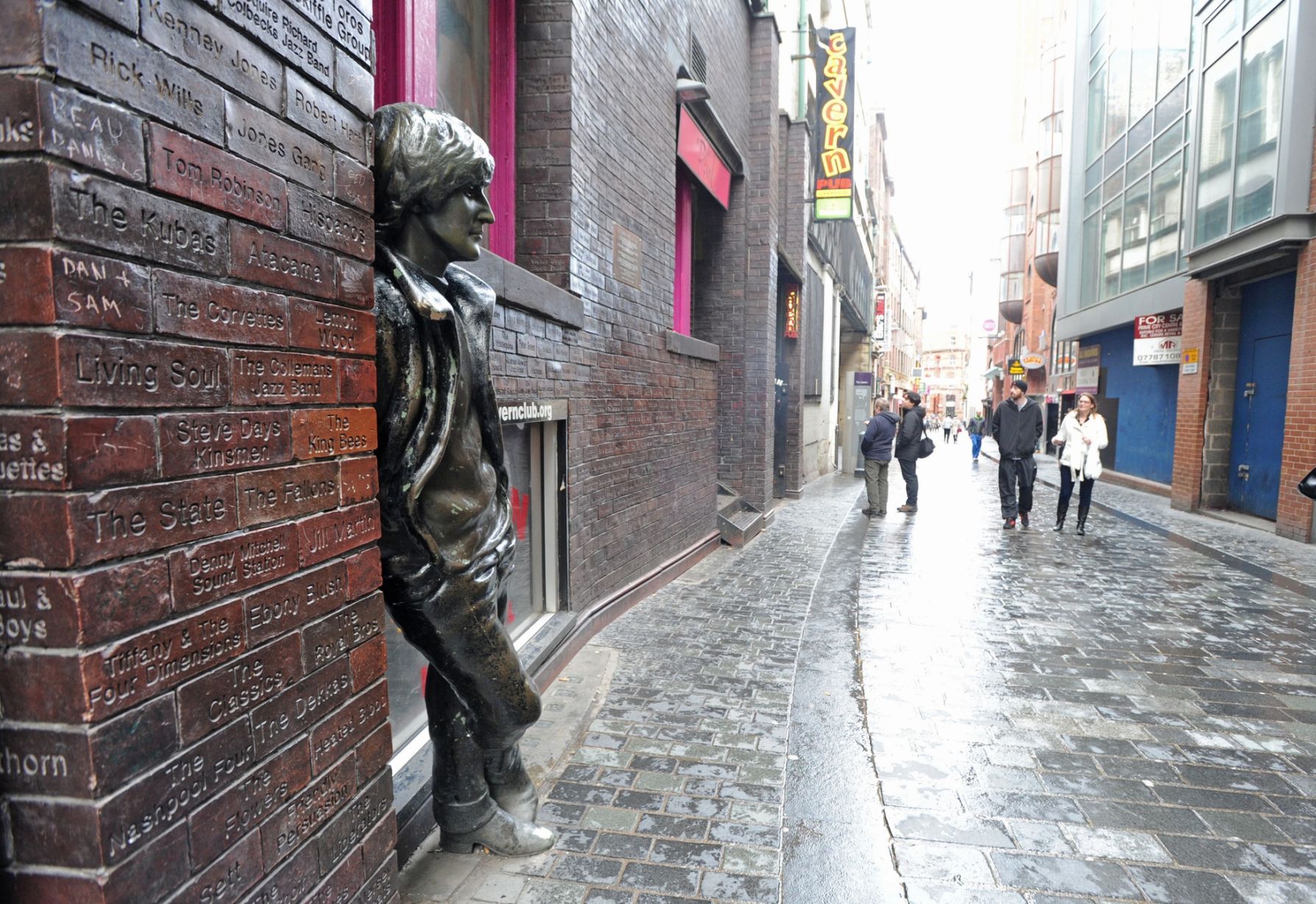 Beatles tourist hotspot could be destined for radical transformation.
Beatles tourist hotspot could be destined for radical transformation.
Mathew Street could be given a new lease of life as a series of developments look set to transform the world-famous tourist destination.
The Beatles hotspot could see several new restaurants, shops and flats opening up in the coming months if city planning chiefs give their backing to a host of schemes.
And while Mathew Street itself could get a makeover, Cavern Walks shopping centre is also being overhauled thanks to a new manager with ambitions to fill its empty retail units within months.
Developers and businesses have their hearts set on a number of projects on Mathew Street and Victoria Street which, together, could revitalise the popular city centre attraction.
Already a huge draw for Beatles fans due to the Cavern, Mathew Street also offers fans the chance to revel in Merseyside’s musical history by taking in the Wall of Records.
But vacant buildings and shop units have cast a shadow over the street despite its popularity with tourists.
All that could change this summer, however. The huge Produce Exchange site, which the ECHO exclusively toured last week, is set to be overhauled as part of a several separate projects being considered by Liverpool council’s planning department.
Posted in Clarion Causes, Summer 2015
Leave a comment
UNLIKELY HERO
On this day in 1971, the most decorated combat hero of World War II is tragically killed. Audie Leon Murphy wasn’t supposed to be a hero! In fact, when he first tried to join the military, the Marines rejected him because of his small size. The paratroopers rejected him, too. Disappointed, he signed up to be a soldier.
The young Texan wasn’t one to be kept down! He soon proved himself to be a skilled marksman and a brave soldier.
Perhaps his most famous demonstration of bravery occurred on January 26, 1945. He was in the small town of Holtzwihr, France, with his unit of only 40 men. They’d been ordered to hold a particular road until reinforcements arrived. Unfortunately, the Nazis chose that moment to attack. Murphy’s men were badly outnumbered—there were up against 250 Nazis and 6 tanks!
Murphy ordered his men to fall back into the woods, even as he picked up his field phone and called for an Allied artillery attack. As Allied fire fell, he was able to take control of a burning tank. Perhaps more importantly, he took control of its machine gun! Germans were all around him, but he fired on the Nazi infantry for an hour until his ammunition ran out. He was talking on his field phone the whole time, helping to direct Allied artillery fire! When his ammunition was finally exhausted, he left the tank. Refusing medical treatment for his injuries, he organized his men into a counterattack. In the end, Murphy and his 40 men rebuffed the 250 Germans.
“I expected to see the whole damn tank destroyer blow up under him any minute,” Private Anthony Abramski later testified. “For an hour, he held off the enemy force single-handed, fighting against impossible odds. . . . The fight that Lieutenant MURPHY put up was the greatest display of guts and courage I have ever seen. There is only one in a million who would be willing to stand up on a burning vehicle, loaded up with explosives, and hold off around 250 raging KRAUTS for an hour and do all that when he was wounded.”
After the war, Murphy came home to a hero’s welcome! He’d earned 28 awards, including the Medal of Honor and some French and Belgian honors. He earned every American medal for valor. He’d done all of this, and he was only 20 years old! He was soon featured on the cover of Life magazine, which brought him to the attention of Hollywood. The soldier-turned-actor would go on to act in dozens of movies, and his memoirs would be made into a film, To Hell and Back. He also became a songwriter.
Despite these successes, everything was not rosy for Murphy in these years. He was candid about the fact that he suffered from “battle fatigue” (today known as post-traumatic stress disorder), and he struggled with insomnia. Nevertheless, he apparently didn’t know how to stay away from military service. He joined the Texas National Guard in 1950, hoping that he would be called to serve in the Korean War. It didn’t happen. He later transferred to the Army Reserve.
Murphy was killed in a private plane crash on May 28, 1971. After his death, he was buried with full military honors in Arlington Cemetery. Finally, just two years ago, his home state of Texas posthumously awarded him its greatest military honor: the Texas Legislative Medal of Honor.
The poor son of sharecroppers was not supposed to be a hero—and yet he was! Determination, perseverance, exceeding expectations . . . . How AMERICAN.
Posted in Clarion Causes, Summer 2015
Leave a comment
COOL EGG HOUSE
If you’ve ever wished you could post up on a mountaintop forever, then meet your new home.
Ecocapsule is a tiny, 86 square-foot living capsule that, as soon as next year, will enable owners to live virtually anywhere. Each mobile pod comes with sleeping space for two, a mini kitchen, a fully functional toilet and shower, storage space, a desk and two windows.
The pods, which are currently in pre-production, harvest rainwater and remove bacteria all on their own, while powering themselves with sun and wind. The capsule’s battery can also charge electric cars, Gizmodo reports, making the location possibilities breathtakingly endless — from beaches to jungles to wide-open prairies.
Pricing for the Ecocapsules is not yet available, but Slovakia-based Nice Architects do know that shipping the pods to the U.S. will not be cheap — it’s estimated to cost about $2,400 to have a pod shipped to New York City.
Posted in Clarion Rock, Summer 2015
1 Comment
WHEN IS DOG ?
Posted in Clarion Causes, Summer 2015
1 Comment
THE WORK ETHIC (OLD SCHOOL)
Clint Eastwood is a tough man and patriot who has had extraordinary success in Hollywood. He is perhaps the most successful conservative actor in the history of American cinema, especially when you consider his directing skills… including the recent box office smash hit “American Sniper.”
But just because Clint could buy his son anything he wanted, doesn’t mean he did it! Good parents teach young children that things shouldn’t be handed to you, and you should work for what you have. Clint made his son, who is now 29, have a job “for as long as he can remember.”
“My dad was pretty old school,” Eastwood tells PEOPLE for its latest issue. “I’ve had a job since I can remember and it’s not like he was like, ‘Hey, what kind of car do you want?’” he says with a laugh. “My first car was a ’91 Ford Crown Victoria that was $1,000. And I had to buy every car after that. I had to do it all.”
via People
For most of his life, he used the name Scott Reeves to stay out of the spotlight. He is humble and has good manners, because of Clint’s excellent parenting skills!
“I like being under the radar. I didn’t get into this business to become famous,” he said. “I got into this business because I like acting and I want to make movies. I would be happy living the rest of my life never famous.”
Scott graduated with a degree in communications from Loyola Marymount in 2008 and Clint hasn’t given Scott an easy route to pursue his acting ambitions either.
“My dad always says, ‘Just stick around.’ Everybody thinks it’s an overnight success. But the reality is, it takes years of hard work,” the hunk said.
Good job, Clint! Many ‘Hollywood’-style parents would easily buy their children sports cars and pay for their college. That can lead to major problems later in life.
But Mr. Eastwood taught his son the value of hard work and discipline. Fantastic!
Posted in Clarion Rock, Summer 2015
1 Comment
LOVE STREET
Photos of Jim Morrison’s and Pam’s first home located in Laurel Canyon, Los Angeles have been published recently. This is a big deal as we never see a good quality picture of the “Love Street” home before they began rebuilding it in the 90’s. The only picture of the house from that time that has been in circulating Doors fan pages was of poor quality and very small.
This is the original house just as it was before it was touched, rebuild, refurnished and resold many times. These are all the original wood, windows, nails, screws and structure of the home. Over the years the house was left to rot. No one lived in it after Jim and Pam moved to the Norton Avenue place in 1970. I don’t know the reason why Jim and Pam up and left Laurel Canyon. Could very well be because of the Sharon Tate Manson murders. A lot of celebrities ran from their homes when Sharon and her friends were found murdered in her home. It escalated when the Labianca’s bodies were discovered the next night.
Morrison fans had stolen parts of the home. From wood planks to pieces from their stove. There have been plenty of renovations to the home as last year the house burnt down and was rebuilt. For me the original home Jim and Pam lived in is gone. It was gone the moment they added new wood, floors, walls and a bell to the upper part of the house. It never had a bell when Jim and Pam lived there. Today the house no longer has wood. It’s now made entirely of cement and that bell was added in again.
Posted in Summer 2015
Leave a comment
Omnia Vincit Amor (Love Conquers All)
This is a love story that begins with two grieving strangers who are about to become a family of 10.
Jessica and Ryan Ronne had never met and were living in different states when they both lost their spouses to brain cancer within the same week. Brought together by an online message, they began corresponding, fell in love and married.
The Ronne family includes parents Ryan and Jessica, and their seven children from previous marriages. Jessica is pregnant with the couple’s first child.
Their household — which now includes her four children and his three kids — is about to expand again as Jessica prepares to give birth to the couple’s first baby in June. And there’s one more reason they’re beaming: She’s just earned a master’s degree, a dream almost a decade in the making.
It’s a moment for the family to savor.
“I don’t really have words for it. I’m so at peace in this life and happy,” Jessica, 38, told TODAY Parents.
“She taught me how to live again,” Ryan, 37, said.
Ryan and Jessica Ronne share a light moment.
Just a few years ago, life was filled with heartache for both of them.
Jessica lived in suburban Grand Rapids, Michigan, with her husband Jason. When he suddenly began losing weight and having seizures in 2007, doctors found a brain tumor, an oligodendroglioma. Surgery helped for a while, but the tumor came back as a baseball-size glioblastoma.
“I felt like I was drowning every day trying to take care of the four kids and a husband who was completely deteriorating,” Jessica recalled.
Jason died on Aug. 24, 2010.
At that moment, some 1,000 miles away in Guymon, Oklahoma, Ryan had just four days left with his wife Kaci. After suffering from excruciating headaches after giving birth to the couple’s third child several months earlier, a scan revealed she had an astrocytoma, a tumor on her brain stem. “It’s going to kill her,” a doctor bluntly told Ryan.
Kaci died on Aug. 28, 2010.
Looking for a way to keep family and friends updated on their spouses’ conditions, both Jessica and Ryan started writing separate blogs online. And somehow, a woman they had never met was reading both of them. On Halloween in 2010, she sent Jessica a message.
“There’s this man in Oklahoma who lost his wife four days after you lost your husband and I just think you could be encouraging to him,” it read.
Jessica found Ryan’s website and left a message offering to talk or email, if he wanted to.
“What was strange was that same Halloween night, my son came in after they’d been trick-or-treating and he said, ‘Dad, when are we going to get a new mom?'” Ryan recalled.
“That just floored me because it had only been two months. I was in terrible shape… I’m not even thinking about that at all. When I prayed with him that night, we just said, ‘God, if that’s what I’m supposed to do, give me a sign, show me something… just prepare my heart for something like that.’ I woke up the next morning to her email.”
Jessica and Ryan began emailing the next day and talked on the phone a week later, staying on the line for hours. They weren’t looking for romance, but the connection between the young widow and widower was instant. They decided to meet on Dec. 2, 2010, in Savannah, Georgia, a city both had always wanted to visit and which they called “neutral ground:” no kids or family to distract them from figuring out what was happening.
“Both of us had really good marriages and thought, ‘I want to do this again.’ I knew very quickly, even in the conversations, that I wanted her to be my wife and spend time with her for the rest of my life,” Ryan said.
Jessica and Ryan had two weddings: one at a courthouse in April 2011, and a church wedding one month later in which their children all took part.
He proposed in February 2011 and the couple married two months later. Jessica’s special-needs son Lucas, who was born with hydrocephalus, attended a great school in Grand Rapids, so Ryan and his kids moved from Oklahoma to Michigan so Lucas would not have to be uprooted.
In 2013, the Ronnes fulfilled their dream of living in a big country house by moving to a 30-acre property in Bath Springs, Tennesee.
The household now includes seven kids under 13: Caleb, 12; Lucas, 10; Mabel, 8; Joshua, 5; Tate, 11; Mya, 10; and Jada, 5. The couple has adopted each other’s children.
“The kids all just meshed as if they were brothers and sisters from day one. It’s just amazing how they just took to each other immediately,” Ryan said.
The children have chores and each day is structured so they grow up to be independent adults, he added. Still, there’s bound to be some chaos.
“We tell people we brace for the weekends. We love it when Monday morning comes because they all go back to school,” noted Jessica, who chronicles some of her experiences on her blog. “Our house isn’t going to be spotless and things are going to be loud and rowdy.”
Jessica comes from a big family — she is the oldest of 12 — so doing that much laundry, cooking and cleaning is not a big deal, she said. The country house has a big garden, fruit trees and chickens, allowing the Ronnes to focus on eating healthy — a big deal for a family so deeply touched by cancer.
Jessica Ronne received her master’s degree from Grand Valley State University last month.
The baby is due June 12, but there was one other big event to celebrate recently. Last month, Jessica graduated from Grand Valley State University with a master’s degree in education, a goal she began working on nine years ago, long before her life was interrupted by cancer, death and grief.
These days, it’s all about joy and love.
“It just feels right, all of it,” Jessica said.
Posted in Summer 2015
Leave a comment
Slings & Arrows
‘To be or not to be, that is the question’. Read Hamlet’s famous soliloquy by Shakespeare below, along with a modern translation and explanation of what ‘To be or not to be’ is about’.
The question for him was whether to continue to exist or not – whether it was more noble to suffer the slings and arrows of an unbearable situation, or to declare war on the sea of troubles that afflict one, and by opposing them, end them. To die. He pondered the prospect. To sleep – as simple as that. And with that sleep we end the heartaches and the thousand natural miseries that human beings have to endure. It’s an end that we would all ardently hope for. To die. To sleep. To sleep. Perhaps to dream. Yes, that was the problem, because in that sleep of death the dreams we might have when we have shed this mortal body must make us pause. That’s the consideration that creates the calamity of such a long life. Because, who would tolerate the whips and scorns of time; the tyrant’s offences against us; the contempt of proud men; the pain of rejected love; the insolence of officious authority; and the advantage that the worst people take of the best, when one could just release oneself with a naked blade? Who would carry this load, sweating and grunting under the burden of a weary life if it weren’t for the dread of the after life – that unexplored country from whose border no traveler returns? That’s the thing that confounds us and makes us put up with those evils that we know rather than hurry to others that we don’t know about. So thinking about it makes cowards of us all, and it follows that the first impulse to end our life is obscured by reflecting on it. And great and important plans are diluted to the point where we don’t do anything.
To be, or not to be–that is the question:
Whether ’tis nobler in the mind to suffer
The slings and arrows of outrageous fortune
Or to take arms against a sea of troubles
And by opposing end them. To die, to sleep–
No more–and by a sleep to say we end
The heartache, and the thousand natural shocks
That flesh is heir to. ‘Tis a consummation
Devoutly to be wished. To die, to sleep–
To sleep–perchance to dream: ay, there’s the rub,
For in that sleep of death what dreams may come
When we have shuffled off this mortal coil,
Must give us pause. There’s the respect
That makes calamity of so long life.
For who would bear the whips and scorns of time,
Th’ oppressor’s wrong, the proud man’s contumely
The pangs of despised love, the law’s delay,
The insolence of office, and the spurns
That patient merit of th’ unworthy takes,
When he himself might his quietus make
With a bare bodkin? Who would fardels bear,
To grunt and sweat under a weary life,
But that the dread of something after death,
The undiscovered country, from whose bourn
No traveller returns, puzzles the will,
And makes us rather bear those ills we have
Than fly to others that we know not of?
Thus conscience does make cowards of us all,
And thus the native hue of resolution
Is sicklied o’er with the pale cast of thought,
And enterprise of great pitch and moment
With this regard their currents turn awry
And lose the name of action. — Soft you now,
The fair Ophelia! — Nymph, in thy orisons
Be all my sins remembered.
Posted in Clarion Rock, Summer 2015
1 Comment
STAGECOACH MARY
Mary Fields was born a slave in Tennessee, after the Civil War anMary Fields d freed her of her bondage, the free woman decided to strike off on her own hook. A fiery, feisty sort, she shared a driving ambition with audacity, and a penchant for physical altercation on a regular basis. She also had a love of smoking rather large foul smelling cigars.
Mary was six foot tall; heavy : tough as nails; short tempered; two fisted; powerful and is said to have toted a pair of six-shooters and an eight or ten-gauge shotgun (for those of you who do not know that is bigger than the 12 gauge the police carry today). How in the heck has this legend in her own time faded from today’s wild west history?
In 1884 she made her way toward Cascade County (west-central Montana) in search of opportunity. Seeking to improve her sustenance and adventure. While awaiting for the fore mentioned opportunity to present itself she accepted employment with the Ursuline Nuns at the mission in Cascade, Montana. The job was not much of a step up the ladder of success. The St. Peter Mission, was a very simple facility, located in the remote wilderness frontier, devoted to the conversion of the heathen savages and other disgusting customers who wandered along. remote as it was it was rather well funded.
Mary was hired to do the heavy work, she chopped wood, did some stone work and rough carpentry. She dug the the necessary holes (the ones for the out houses). And when the missions reserves started to run low, Mary made the supply runs to the train stop, or as far as Great Falls or the city of Helena when special needs needed to be filled.
So here is one of those stories I referred to in the disclaimer. Although every account I reviewed told it about the same.. On one night run, (the distance was not that great but it was cooler at night.). Mary’s wagon was attacked by a pack of wolves. The horses bolted and Mary could not regain control, the wagon overturned, the team escaped. Mary and the supplies were unceremoniously dumped on the darkStage Coach Mary, Mary Fields prairie.
The story continues with Mary holding the wolves at bay the rest of the night with her rifle and revolvers. All this occurred in the pitch darkness of the prairie night. Anyway some how she survived the night and with the coming of day light was able to eventually deliver the goods to the relieved nun’s who had spent $30 on the whole mess. They were not so relieved with Mary’s safety that they did not deduct they price of a keg of molasses that leaked from a keg that had hit a rock from her salary.
Mary’s pugnacious nature kept her prepared for any inconveniences from wolves to drunken cowboys. Going heavily armed at all times and ready with her rock hard fists, ready for a fist fight at the drop of a hat, most gave Mary a wide berth. Mary did not pay heed to the Victorian standard for women at that time, her fashion statement rather presented her in an unfavorable light. Heaven help the ruffian men who tried to trample her hard earned rights. Oh woe to them!
The GREAT FALLS EXAMINER claimed that she broke more noses in central Montana than any other person. The Examiner was the only paper in circulation in the Cascades at the time.
One hired hand at the mission confronted them with a complaint on the fact that Mary, a mere woman, was making $2 a month more than he ($9 vs. $7) , and just what made her think she was worth more than him? His name reportedly was Yu Lum Duck, he complained to the Bishop, and more publicly in a saloon in a rougher version. What made the uppity colored woman think she was better than him?
Now Mary was a regular customer in this saloon, and word soon was carried to her ears. Mary’s blood began to stew and boil. Shortly after Mary saw him cleaning one of the latrines behind the mission. Mary intended to simply shoot him, she missed. The affair became a general shootout with neither hitting the other. Bullets flew everywhere. After the fracas was over both parties split – neither had scored a direct hit. But one of Mary’s bullets glanced off a rock and hit the forlorn Yu Lum Duck in the left buttock – completely ruining his new $1.85 trousers. But worse than that, one of Mary’s bullets had passed through the Bishop’s laundry hanging behind the mission, putting holes in his drawers and two white shirts.
The Bishop demanded that Mary be fired and the complaining man was given her job and the $2 raise with it.
Out of work Mary tried the restaurant business. Her cooking was so terrible, that no one would eat it. Soon she was looking for work again.
Mary Fields In 1895 she landed a job carrying the U. S. Mail. This work suited her fine as she had always been independent and determined. She quickly earned a reputation for delivering the mail in all kinds of conditions regardless of the weather. She and her old mule plugged along through bitter raw blizzards, roasting heat and drenching rain. She and old Moses (the mule) delivered mail to remote miner’s cabins and other outposts – delivering mail, land claim forms and parcels that kept communication open to the outside world. She is credited with helping advance the development of a large portion of central Montana, a contribution that is not recognized today.
This is where she became known as Stagecoach Mary, not by association with a stage line but because she Mary Fields was so dependable of keeping a regular schedule. Mary kept up this activity until well into her sixties. But the ravages of time wore her down, and she retired from the mail delivery business. She needed an income so at the age of seventy she went to the laundry business in Cascade.
Figuring that she deserved to relax she did not do much laundry. Rather, she spent much of her time in the local saloon, drinking whiskey, and smoking her foul but beloved cigars. She entertained the assortment of sweaty and dusty men with stories of her exploits and claimed to be a crack shot, but her aim at the cuspidor was none to good and she often missed to the disgust of the nearby patron who was in the way. But what the hell, she did laundry didn’t she? One lout refused to pay his full laundry bill he had ordered extra starch in his cuff and collar, Mary heard him out in the street. She left the saloon and confronted him with a solid blow to the jaw. She knocked him flat at the age of seventy-two with the one blow and knocked out a tooth. Mary later said that the satisfaction she got from hitting him was worth the amount he owed her. The recipent of the blow afterwards expressed gratitude to Mary for knocking out his tooth, it had been troubling him for some time.
Mary died of liver failure in 1914. She was buried with a simple wooden cross in Hillside Cemetery in Cascade.
People who knew this mellow cigar smoking, whiskey drinking old lady were hard pressed to believe she was the gun packing, short-tempered female of old they had heard so much about.
That this historical Old Gal lived is documented pretty well, she like so many has been lost in the dust of time. It is good to brush the dust off some of these old tales and air them out again.
Well tiime to ramble on out of here.
Posted in Summer 2015
Leave a comment
SAVED
 Kilo the pit bull was about to see the end of his life at a local animal shelter, when Candice Miller brought him home.
Kilo the pit bull was about to see the end of his life at a local animal shelter, when Candice Miller brought him home.
“Rescued in literally his last hour,” Miller says.
The brown and white doggie had arrived at the shelter, where Miller volunteers, from a home where it was said he’d been beaten, and forced to live outside, and where he didn’t get enough to eat. He and a female dog were bred, and then, Miller says, their puppies were subject to the same conditions.
That past had left Kilo fearful. He was so nervous that he crawled on his belly, when moving around the shelter. Miller devoted herself to improving his confidence, but Kilo was still overlooked.
Miller needed some healing, too. She’d recently quit a job that had left her stressed, depressed and anxious. One of her older dogs had recently died; she was heartbroken, to boot.
Taking care of shelter dogs, especially the pit bulls, was how Miller tried to soothe herself. She’d noticed they “got looked over” but “were incredibly gentle, sweet, loving and affectionate even in the shelter environment. It was impossible not to fall in love!”
She fell hard for Kilo. But no one else did; he just wasn’t putting on his best face for potential adopters.
After a couple of months, Kilo was given five more days to be adopted, or he’d be euthanized. Miller checked in on him every day. No takers. On the last day, when she called, Miller was told Kilo was in the holding area, waiting his turn to die.
She started to cry, then rushed right over to pick him up.
“The rest was history,” she says. “Kilo came into my life at a point where I needed him the most … We both had been through some bad stuff, but together are absolutely happy and healthy.”
Kilo — and Miller — got lucky, as did the three other pits, including a spectacularly adorable new puppy, Miller’s also taken in in the last few years.
It’s estimated that some 800,000 – 1 million pits are killed in shelters every year.
And Miller’s goal now is to help other pups, like hers, find their own happy families, by showing the world how great it looks when your home, your life, is overrun by dogs.
Posted in Clarion Causes, Summer 2015
1 Comment
STEVIE WONDER DOG
 A sweet-natured pit bull named Stevie will be allowed to accompany his human to school each day, a federal judge has ruled — a victory for the rights of certified service animals like Stevie, and especially for the youngster who relies on him so much.
A sweet-natured pit bull named Stevie will be allowed to accompany his human to school each day, a federal judge has ruled — a victory for the rights of certified service animals like Stevie, and especially for the youngster who relies on him so much.
Seven-year-old Anthony has cerebral palsy, and therefore requires a little more help with things than most children his age. Fortunately, Stevie is always there to walk alongside him, offer him comfort and alert grown-ups when something is wrong. But for the past two years, officials at Anthony’s school in Broward County, Florida, said his dog couldn’t accompany him to class, reports the Miami Herald.
Since then, Anthony’s mother Monica Alboniga has been fighting in court for her son’s right to take Stevie to class. She feared that the school’s strict rules regarding service animals would get her son expelled.
“I feel completely safe every time he is with the dog, because I know the dog will look for help,” said Alboniga. “When Anthony is having convulsions, [Stevie] starts barking and goes looking for us. Then he goes back to Anthony and stays with him.”
Among the rules put in place by the school required Alboniga to pay for a “handler” to accompany Stevie and Anthony — a requirement so prohibitively expensive, her lawyer called it “an impossible barrier.”
After a long legal battle, U.S. District Judge Beth Bloom issued her ruling — and she sided with Stevie.
“Stevie is fully trained. Throughout the school day, Stevie simply stays by [Anthony’s] side,” Bloom wrote.
“Given the specific facts here, having Stevie tethered to [Anthony] in school would constitute control by [Anthony] over his service animal as the animal’s handler with the meaning of the regulation. As such, permitting [Anthony] to attend school with Stevie tethered to him would be a reasonable accommodation required of the School Board.”
Under the Americans with Disabilities Act, schools aren’t allowed to separate people from their service animals. The extent of that law has been challenged before, but Stevie’s case could set a precedent.
“He is a very good dog,” Alboniga told the Herald. “He is very sweet, and very obedient. He is the best there is.”
Posted in Summer 2015
Leave a comment
WISDOM
Luther Standing Bear was an Oglala Lakota Sioux Chief who, among a few rare others such as Charles Eastman, Black Elk and Gertrude Bonnin occupied the rift between the way of life of the Indigenous people of the Great Plains before, and during, the arrival and subsequent spread of the European pioneers. Raised in the traditions of his people until the age of eleven, he was then educated at the Carlisle Indian Industrial Boarding School of Pennsylvania, where he learned the english language and way of life. (Though a National Historical Landmark, Carlisle remains a place of controversy in Native circles.)
Like his above mentioned contemporaries, however, his native roots were deep, leaving him in the unique position of being a conduit between cultures. Though his movement through the white man’s world was not without “success” — he had numerous movie roles in Hollywood — his enduring legacy was the protection of the way of life of his people.
By the time of his death he had published 4 books and had become a leader at the forefront of the progressive movement aimed at preserving Native American heritage and sovereignty, coming to be known as a strong voice in the education of the white man as to the Native American way of life. Here, then, are 10 quotes from the great Sioux Indian Chief known as Standing Bear that will be sure to disturb much of what you think you know about “modern” culture.
1) Praise, flattery, exaggerated manners and fine, high-sounding words were no part of Lakota politeness. Excessive manners were put down as insincere, and the constant talker was considered rude and thoughtless. Conversation was never begun at once, or in a hurried manner.
2) Children were taught that true politeness was to be defined in actions rather than in words. They were never allowed to pass between the fire and the older person or a visitor, to speak while others were speaking, or to make fun of a crippled or disfigured person. If a child thoughtlessly tried to do so, a parent, in a quiet voice, immediately set him right.
3) Silence was meaningful with the Lakota, and his granting a space of silence before talking was done in the practice of true politeness and regardful of the rule that ‘thought comes before speech.’…and in the midst of sorrow, sickness, death or misfortune of any kind, and in the presence of the notable and great, silence was the mark of respect… strict observance of this tenet of good behavior was the reason, no doubt, for his being given the false characterization by the white man of being a stoic. He has been judged to be dumb, stupid, indifferent, and unfeeling.
4) We did not think of the great open plains, the beautiful rolling hills, the winding streams with tangled growth, as ‘wild’. Only to the white man was nature a ‘wilderness’ and only to him was it ‘infested’ with ‘wild’ animals and ‘savage’ people. To us it was tame. Earth was bountiful and we were surrounded with the blessings of the Great Mystery.
5) With all creatures of the earth, sky and water was a real and active principle. In the animal and bird world there existed a brotherly feeling that kept the Lakota safe among them. And so close did some of the Lakotas come to their feathered and furred friends that in true brotherhood they spoke a common tongue.
6) This concept of life and its relations was humanizing and gave to the Lakota an abiding love. It filled his being with the joy and mystery of living; it gave him reverence for all life; it made a place for all things in the scheme of existence with equal importance to all.
7) It was good for the skin to touch the earth, and the old people liked to remove their moccasins and walk with bare feet on the sacred earth… the old Indian still sits upon the earth instead of propping himself up and away from its life giving forces. For him, to sit or lie upon the ground is to be able to think more deeply and to feel more keenly. He can see more clearly into the mysteries of life and come closer in kinship to other lives about him.
8) Everything was possessed of personality, only differing from us in form. Knowledge was inherent in all things. The world was a library and its books were the stones, leaves, grass, brooks, and the birds and animals that shared, alike with us, the storms and blessings of earth. We learned to do what only the student of nature learns, and that was to feel beauty. We never railed at the storms, the furious winds, and the biting frosts and snows. To do so intensified human futility, so whatever came we adjusted ourselves, by more effort and energy if necessary, but without complaint.
9) …the old Lakota was wise. He knew that a man’s heart, away from nature, becomes hard; he knew that lack of respect for growing, living things soon led to lack of respect for humans, too. So he kept his children close to nature’s softening influence.
10) Civilization has been thrust upon me… and it has not added one whit to my love for truth, honesty, and generosity.
Posted in Summer 2015
Leave a comment
Barbarurex Morrisioni
To get through the long, tedious hours sitting in the fossil archives at the University of California-Berkeley, Jason Head would listen to the hypnotic sounds of The Doors.
So when he happened upon one of the biggest lizards that ever walked on land, he found it fitting to name it after the band’s frontman, Jim Morrison — the original Lizard King.
But that’s not what makes this find interesting. It’s what the existence of the “Bearded King Morrison” tells us about the effects of climate change that’s intriguing.
The climate connection
Lizards, like snakes and turtles, are cold-blooded animals. They depend on warmth from their surroundings to heat their bodies.
Bearded King Morrison, known scientifically as Barbarurex morrisioni, was six feet long.
And when the environment warms up, they become more active, get hungrier, eat more and grow.
For six years, Head sifted through fossils of animals that lived 40 million years ago, looking for clues on climate change.
Then it jumped out at him: The Bearded King Morrison, as Head named his now-extinct lizard. Head and his team introduced it in a study to be published Wednesday by research journal Proceedings of the Royal Society B.
“It struck me that we had something here that was quite large and quite unique,” he said.
The find was striking, because when it comes to climate trends, bigger reptiles point to a warmer climate, Head said.
“One of the things you can actually do is estimate past temperatures by looking at the body size of fossil reptiles,” said Head, a paleontologist who studies the Earth and its atmosphere at the University of Nebraska-Lincoln.
The lizard’s hefty size helped confirm the elevated global temperature during a period known as the Paleocene greenhouse.
“This would be a globally warmed time in Earth’s history, where there’s no ice at the poles,” Head said. There was a lot of carbon dioxide in the atmosphere back then.
Sound familiar?
Man-made global warming in the 21st century is pushing temperatures back up in that direction, he said.
Current average temperatures are only about 2.5 degrees Celsius shy of where they were 40 million years ago, Head said, when the Bearded King Morrison grazed in the forests of what is now Myanmar.
The Doors connection
The lizard’s proper scientific name is Barbarurex morrisioni, and there is a backstory to how Head arrived at it. The Doors is Head’s favorite 60’s rock band.
“I had their albums going on kind of endless loop while we were writing and doing the analysis on the lizard,” he said.
The size of the lizard took him by surprise. It reminded him of the nickname of now deceased Doors singer Morrison, also known as the Lizard King. Morrison also had a reputation for standing up for the environment.
The king-size lizard, the ecological connection. For Head, the name fit.
The Bearded King Morrison was no dinosaur. It was smaller than today’s crocodiles and Komodo dragons.
But those are carnivorous reptiles. This was an herbivore. It ate plants.
It was six feet long and weighed as much as a German shepherd, pretty sizable for a lizard.
Head says he hasn’t found fossil records that show why the creature eventually went extinct.
The evolution of such a large reptile shows what a huge effect a slight warming bump can have, Head said. With the ice caps gone, Earth’s climate became warm and muggy, and forest covered the planet.
There was plenty of greenery for the chubby lizard to munch through.
As man-made climate change progresses, existing reptiles will spread out into new territory, Head predicts.
So can we see another spurt of such giant lizards? Unlikely.
For them to evolve to the size of the Bearded King Morrison, they would require global temperatures to slowly rise a few degrees and then remain stable for a very long time.
Today’s climate is warming so rapidly that “we’ll basically block off their ability to respond to the temperature increase,” Head said.
Instead of evolution, he said, we’ll see extinction.
Or, as Morrison sang, “This is the end, my only friend.”
Posted in Clarion Causes, Summer 2015
Leave a comment
NURSE-CAT
Rademenesa was diagnosed with an inflamed respiratory tract when he was 2 months old. He survived the ordeal and now lives at the animal shelter and keeps other sick animals company and tries to nurse them back to health.
Posted in Summer 2015
Leave a comment
Honoring Our living Heroes By Eddie Zeller
Another Beautiful Morning at Camp Pendleton for the MARSOC/MSOB Navy Cross and Bronze Star Ceremony.
What an Honor again to be Invited to this Marine Corps Ceremony for some Real Heroes who deserve to be recognized for what Marines do Best.
Semper Fi. GySgt. Jacklin,N/C,
GySgt Bill Simpson, B/S,
GySgt Chris Buckminster B/S,
SSgt Hafeez Hussein, B/S,
Sgt Bill Hall, B/S, Sgt David Harris B/S…
All Marine Special Operators….
Posted in Clarion Causes, Summer 2015
1 Comment
ROCK ON
Dwayne “The Rock” Johnson is known for his long career in professional wrestling and butt-kicking roles in action flicks, but he showed off his softer side on Instagram on Easter.
Johnson was driving his truck when he noticed a group of young men running after his vehicle and yelling.
“Thought to myself, ‘Should I stop or keep drivin’?’ I stopped. I hop out of my truck and this kid runs up to me, hugs the hell outta me,” he wrote on the photo-sharing social media site.
The man hugging “The Rock” was Nick Miller, who battled Hodgkin’s lymphoma. “(Miller said) It’s been his life’s dream to meet me and tell me how much I’ve inspired him to fight cancer… and hard-core chemo and stem cell transplant treatments. He was a little teary eyed and said for months and months all he’s wanted to do was find me and say this face to face.”
Johnson was moved by Miller’s story and thanked him for sharing it, hugging Miller and his friends.
“As I’m drivin’ I start shaking my head (and tearing up) at how fragile life is and how amazing and cool the universe was to make this meeting happen between myself and this special kid Nick Miller,” Johnson wrote.
“Let’s always take a moment to count our blessings… cause there’s always something to be grateful for.”
Posted in Clarion Causes, Summer 2015
Leave a comment
ONION THERAPY
Your feet’s bottom are a direct and powerful access points for your body’s internal organs in what the Chinese medicine term as meridians. Each organ within one’s body is provided a pathway by these meridians. According to others, meridians are non-existent within one’s body or at the feet’s bottom. Believers of Chinese medicine will tell you that there is a close relationship between the nervous system and the meridian system.
If you know what a body’s nervous system is, then it’s easy for you to understand what meridians mean. The two are one and the same thing taking into consideration of their location and interpretation within one’s body.
Approximately,7000 nerve endings are located at the feet of a person and they are directly linked with the various organs in the body of a person.
They are likened to electrical circuits but their power is in most cases dormant as many do not seek for acupuncture to aid the nerves or meridians in any way and nowadays people wear shoes. It’s because of that we recommend people to walk barefoot while outside. By doing that, the meridians at the feet’s bottom are stimulated as well as grounding of one’s body to the negative ion of the earth’s field takes place.
For these meridians (electrical circuits) to be opened as well as ensure the internal organs are purified minus opting for any dietary measures, cutting garlic or onions and wearing them with sock at the bottom of the feet when sleeping is encouraged.
Since garlic and onions are natural air purifiers, they can kill bacteria and germs whenever they are topically applied to the skin. They at the same time contain phosphoric acid (which makes people cry whenever they are cut open) which if it enters into one’s bloodstream, it does blood purification and at the same time kills any germs or bacteria which may be existent and thus protects one from being a victim of flu.
There is that percentage of people who believe that whenever an onion is reused, there is a possibility of it having bacteria and germs. I’m not sure about that statement because while others are supporting it, there is that percentage which is against it. What I’m sure about is, whenever an onion is cut, the exposed surface gets oxidized and that means it’s not the healthiest or freshest thing to take and thus it’s recommended to cut the exposed layer off to ensure to ensure any existent bacteria or germs are not eaten.
The following are the steps which you should follow whenever you want to kills bacteria and germs through blood purification.
Step 1: Organic Onions Are Cut Into Slices (Red or White Onions)
Organic onions are preferred since they do not contain chemicals such as pesticides and it couldn’t be nice letting them enter into your bloodstreams while you’re asleep. The onions are supposed to be cut into flat slices to that they can cover the feet’s bottom substantially as you sleep.
Step 2: Cover The Bottom Of Your Feet With The Onions And Put On Your Socks As You Sleep!
While asleep, the onion’s natural powers are in action in what is known as (Trans-dermal application) leading to killing of germs and bacteria and blood purification and at the same time toxins are absorbed! Purification of your room’s air also takes place.
Users also benefit from air purification effects. Chopped up onions have been used in places like England to purify air and as a result prevent other infections such as flu and any probable infectious attacks.
The picture below shows the systems and organs in the body together with their meridian points of connection at the foot region.
footmeridian
The following are the benefits of putting the cut onions in your sock (at your feet’s bottom) as you sleep…
Blood purification: When the phosphoric acid that’s found in onions is absorbed via the trans-dermal means blood purification takes place.
Kills pathogens, germs and bacteria: Garlic and onions have strong anti-viral and anti-bacteria benefits.
Air purification: the smelly onion chamber created at the feet’s bottom purifies air and leaves the feet with a better smell that’s free of chemicals and toxins which are pulled while you’re sleeping.
Posted in Summer 2015
Leave a comment
OVERTHINKING

What is overthinking? Is it thinking too much? Is it worrying too much? It seems to be a cycle of thoughts that leads to worrying when it won’t break.
We read into every little thing – from when we don’t get a text back to when someone glances at us and we interpret it as a threat; it’s by design. We can control our thoughts and the extent they exist with a purposeful focus that stops any worry and anxiety before it even starts.
1. See the bigger picture.
Fractal everything out. In any situation, you can take yourself and view it from a higher or objective perspective. When you feel overwhelmed from all your responsibilities, take your view point out of the equation. Clear your mind, merge with the void for a moment. See what you are working toward, see the bigger picture of what you want in your life.
Is what you’re doing right now working toward your passion? If not, shift onto the path that will bring you the most joy!
2. Stay present.
This is so important in all aspects of life. Being fully aware, engaged and present takes interaction and connection to a whole new level. By focusing on each point in an interaction and not going off in thought is crucial to not overthinking.
When we are already lost in a train of thought while a conversation is still going, we don’t fully experience it and it’s not fair to those engaging with us.
We don’t give the energy back when we aren’t fully engaged with others. Stay present, take a breath and straighten your back every time you feel yourself slip into disengagement.
3. Be a person of action.
Do what you’ll say you’ll do because actions speak SO much louder than words. If you have a plan or something Growing-Hands you’ve been talking about doing; do it. Bring your idea’s to fruition because we are creators and that’s what we came here to do.
When we are in a zone of creation, that pure focused energy is immensely powerful and is the push that brought us everything we use today.
All the inventions, everything we can physically use were once ethereal thoughts that we brought forth from the higher realms onto the 3D!
4. Let go; find peace in the unknown.
We can’t know everything (yet), so find peace in not knowing. We aren’t meant to experience this life having all the answers. We came here to ask the questions and create the answers ourselves.
Break the cycle of overthinking the same thing. It brings nothing but anxiety and creates preconceived expectations that aren’t fair to anyone.
When you find yourself caught in a thought cycle, take a breath, look around and focus on your environment to get yourself back in the moment. It’s all about where your focus is and how long you can keep it there. Practice expanding your attention span and putting your energy into what brings you joy.
Posted in Clarion Causes, Summer 2015
Leave a comment
EASY DENTAL
EASY DENTAL
DOWNTOWN CONVENIENCE WITHOUT DOWNTOWN PRICES
DORMAN R. MALONE, Jr, D.D.S GENERAL DENTISTRY.
ORTHODONTICS – IMPLANTS – COSMETICS
245 25th Street San Diego Ca 92101. (619) 236-9831
We are the only dentist in San Diego that accepts BITCOIN
Posted in Clarion Causes, Summer 2015
Leave a comment
TUNNLE DOG
A terrified and malnourished dog named Bitty was recently rescued from a sewer tunnel. Within hours, he was unrecognizable.
Annie Hart, founder of the Los Angeles-based animal rescue group Rescue from the Hart, told The Huffington Post that the dog had been saved just in time from what could’ve been a disastrous situation.
“When we received the call for help, we were told that there had originally been two dogs, but one drowned earlier in the day during a rainstorm. With another storm on its way, we rushed to the location to try and save Bitty in time,” Hart said.
Hart rescued Bitty with the help of Eldad Hagar, founder of the animal rescue group Hope for Paws. In the video above, Hagar gently coaxes Bitty out of the tunnel. The visibly frightened dog is seen panicking as Hagar attempts to win his trust.
Once rescued and smothered with love, Bitty clearly undergoes a profound transformation. The change “from scared to loving” is “heartwarming” to watch, Hart said.
Posted in Summer 2015
1 Comment
VISITING MAMMA
The 10-year-old dog named Sissy walked all the way into the lobby of Mercy Medical Center in Cedar Rapids, where Franck is recovering from complications related to cancer surgery, according to NBC affiliate KWWL.
Nancy Franck’s dog walked 20 blocks alone from her home to visit Franck at a hospital in Cedar Rapids, Iowa.
Franck told KWWL that she’d assumed her daughter, Sarah Wood, secretly dropped the dog off.
“I said, ‘Did you sneak this dog in?’ Sarah said, ‘No, [Sissy] snuck herself in,'” Franck said. “Set the door off — she got in by herself, too. So, she was on a mission.”
Franck called Sissy’s visit a “big boost,” especially since Sissy went missing for a few hours that day. Franck’s husband, Dale, had taken Sissy and another dog, Barney, out of the house to let the pets relieve themselves, but only Barney came back inside.
“I thought they both came back in the house,” Dale said. “I was panicking.”
Thankfully, Mercy’s security personnel found Sissy, who was reunited with Nancy for a few minutes before returning home. There, Wood told KWWL, Sissy would have a story to tell.
“I’m sure when Sissy got home,” Wood said, “she told Barney, ‘Guess who I got to see, and what I got to do, and where I went?'”
Posted in Summer 2015
Leave a comment
COPS LOVE
Two cops on patrol in Anniston, Alabama, noticed something unusual about a puppy by the side of the road. It didn’t appear to have any tags, and it looked extremely unhealthy.
As they got closer, The Dodo reports, they noticed its head was extremely swollen due to injuries on its neck, head, and shoulders. They later learned that these are injuries consistent with dog-fighting, and it’s possible the puppy was used as a “bait dog.”
The officers tried to get closer, but the dog, clearly frightened, attempted to run away. His wounds prevented him from running quickly or in a straight path, however, and the officers soon caught up with him.
Upon learning that an animal control officer was not available, Officers Matthew Preuninger and Brian Scott scooped up the puppy and got him to an animal hospital. A veterinarian said that if they hadn’t found the 10-week-old puppy when they did, he may not have made it, The Anniston Star reports.
It took Preuninger’s wife one look at the pit bull puppy to know that the dog, now named “Phil,” had just found his forever home.
“It was our mission at that time that Phil was OK, and the more we interacted with the vet and his staff, the more Phil was a part of our lives,” Preuninger said.
Phil had two other rescue dogs and a cat already waiting at home to greet him.
Phil has adapted nicely to his new life, and though sometimes he’s “haunted by his nightmares” and whimpers or barks in his sleep, The Dodo reports, he’s found comfort in his new family.
Posted in Clarion Spring 2015, Summer 2015
Leave a comment

